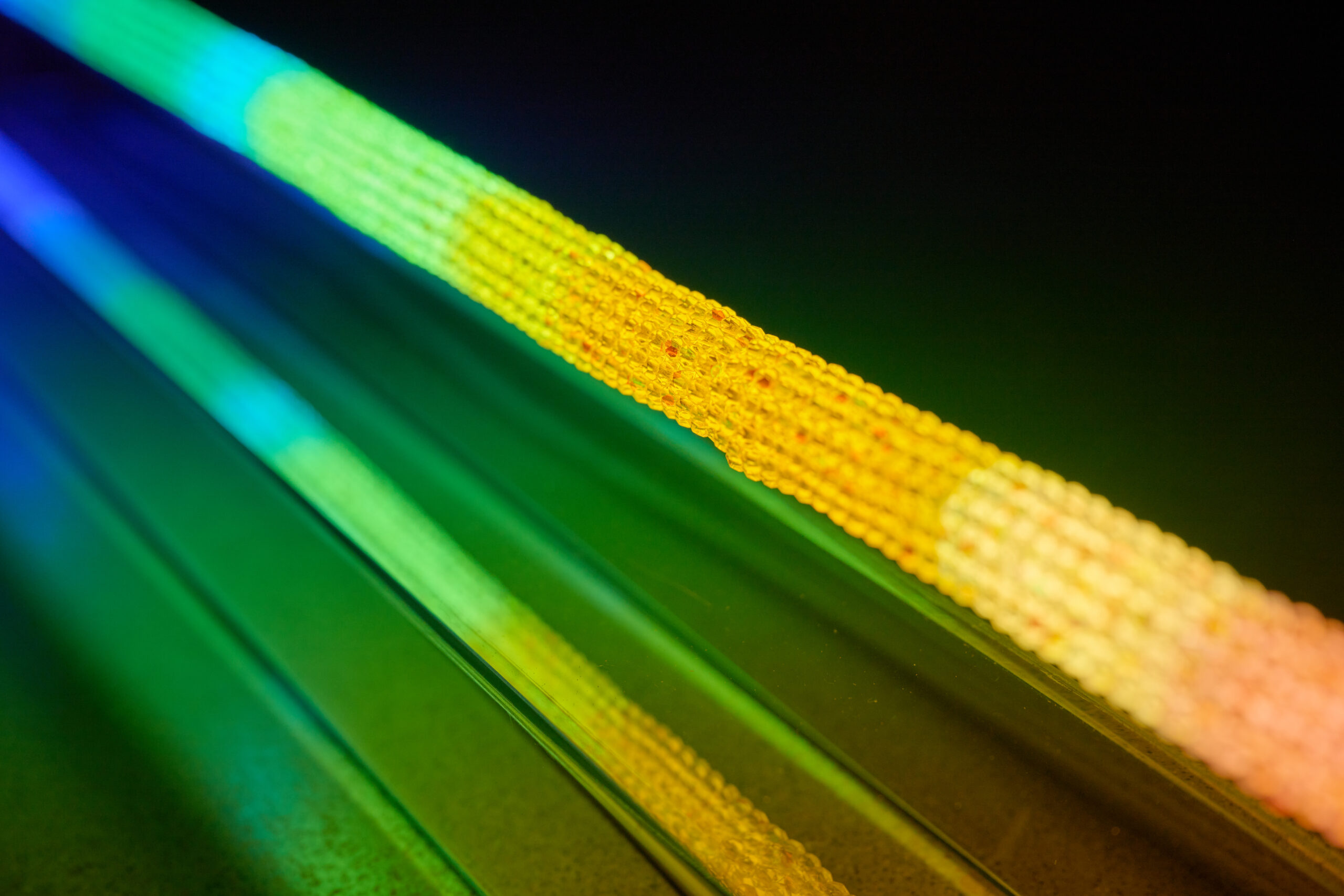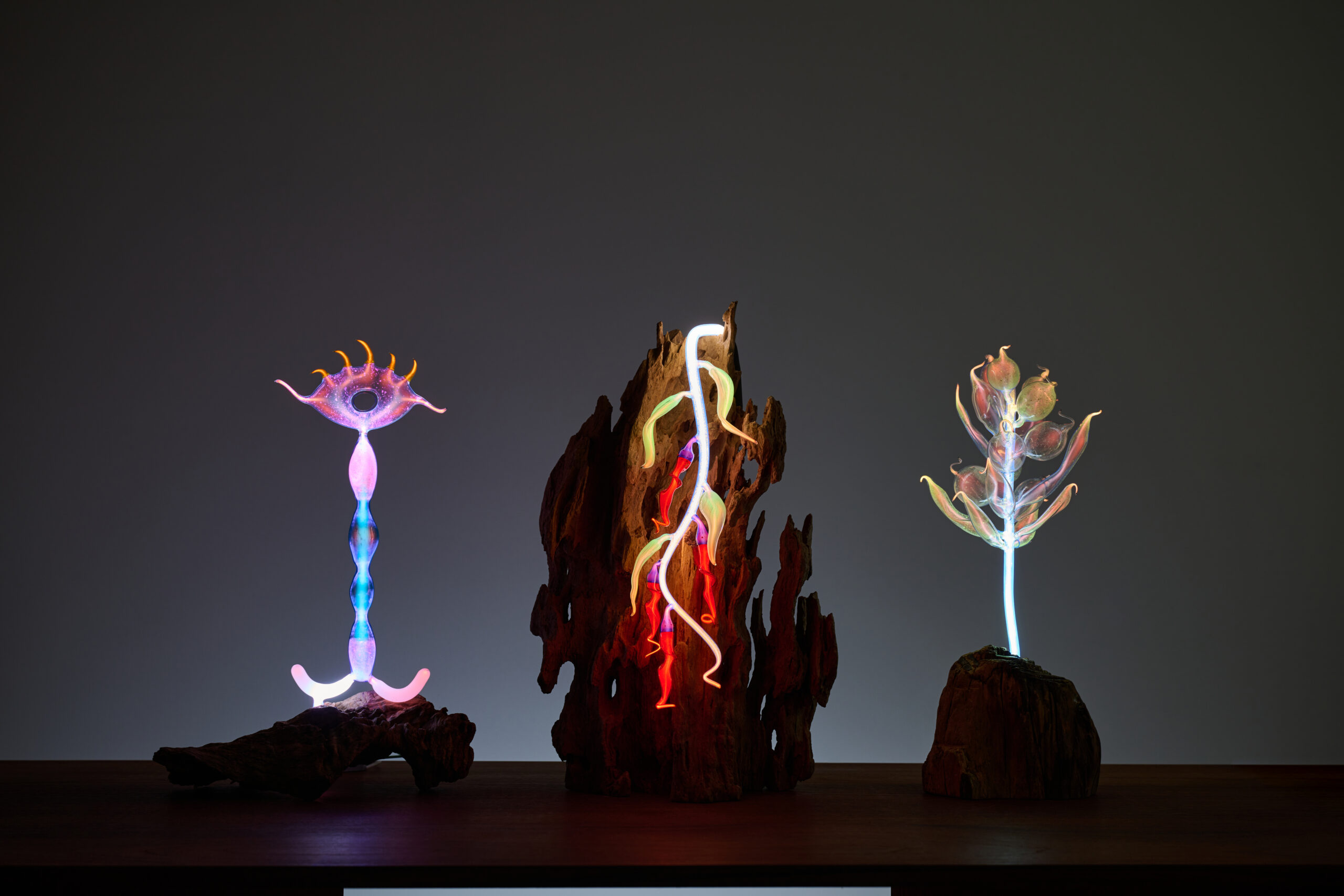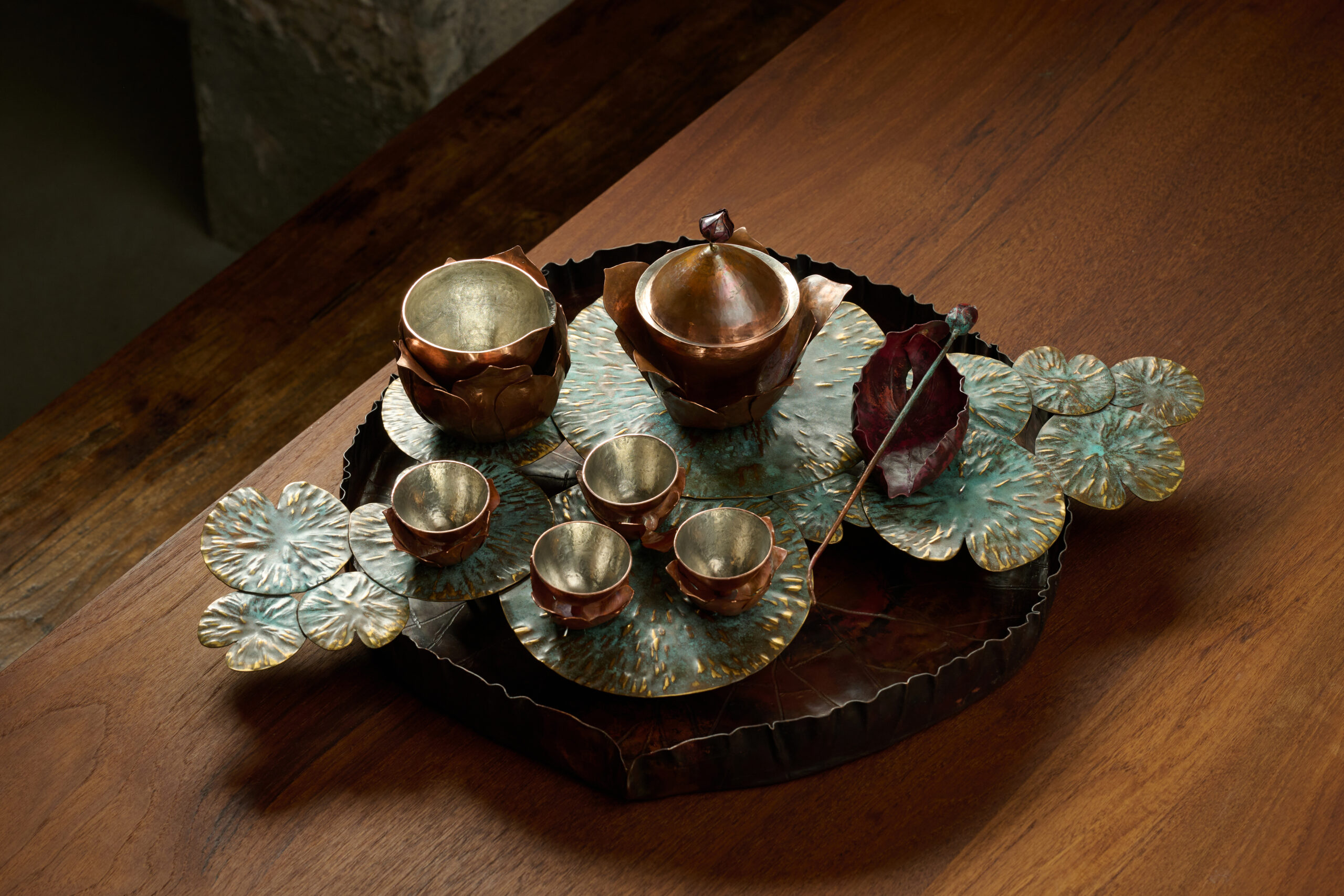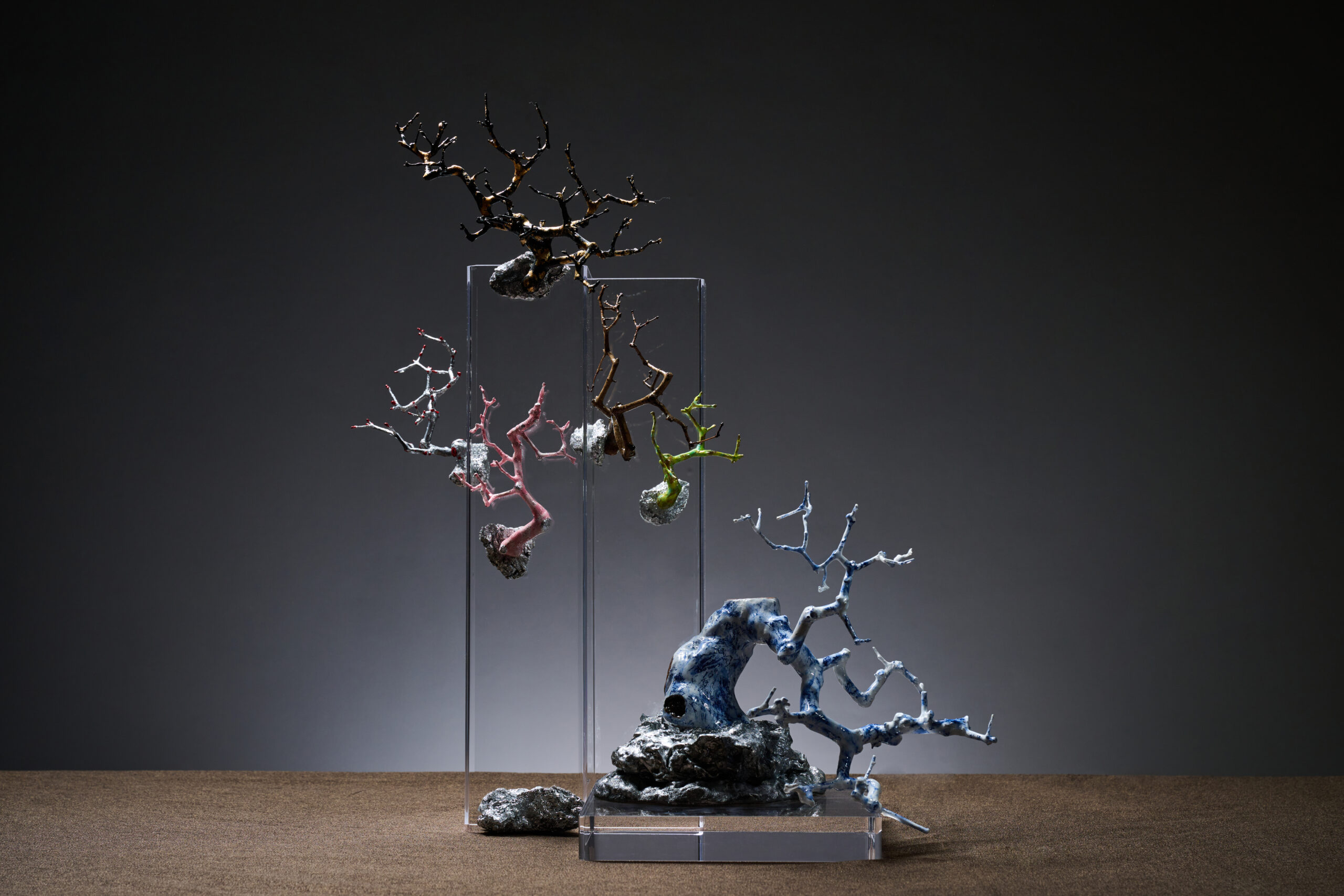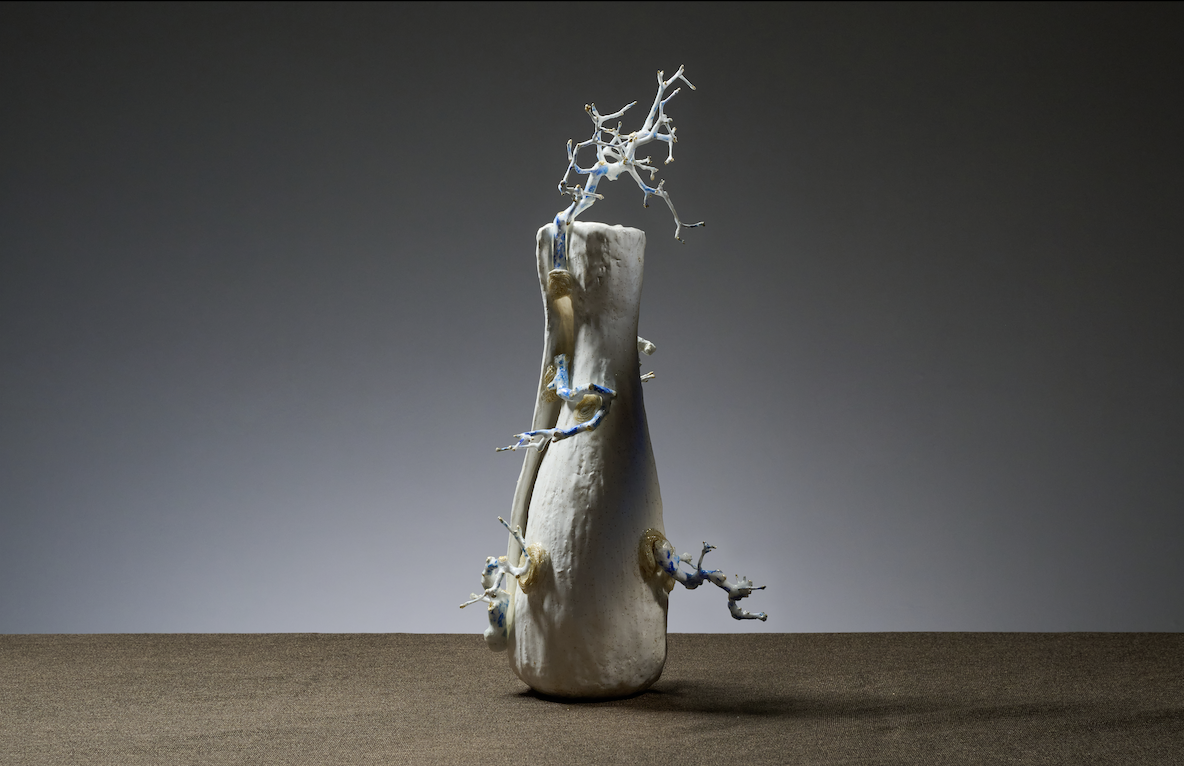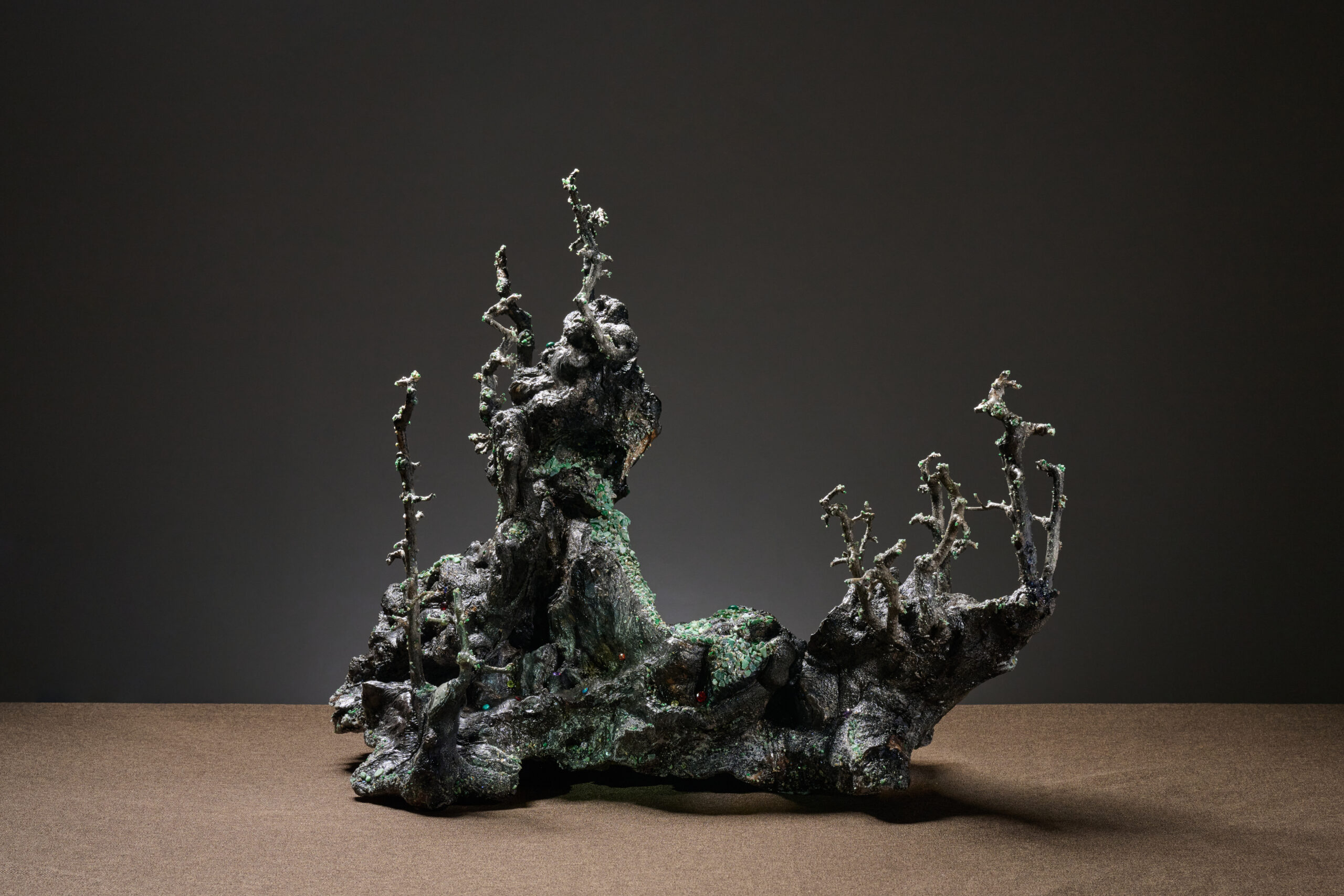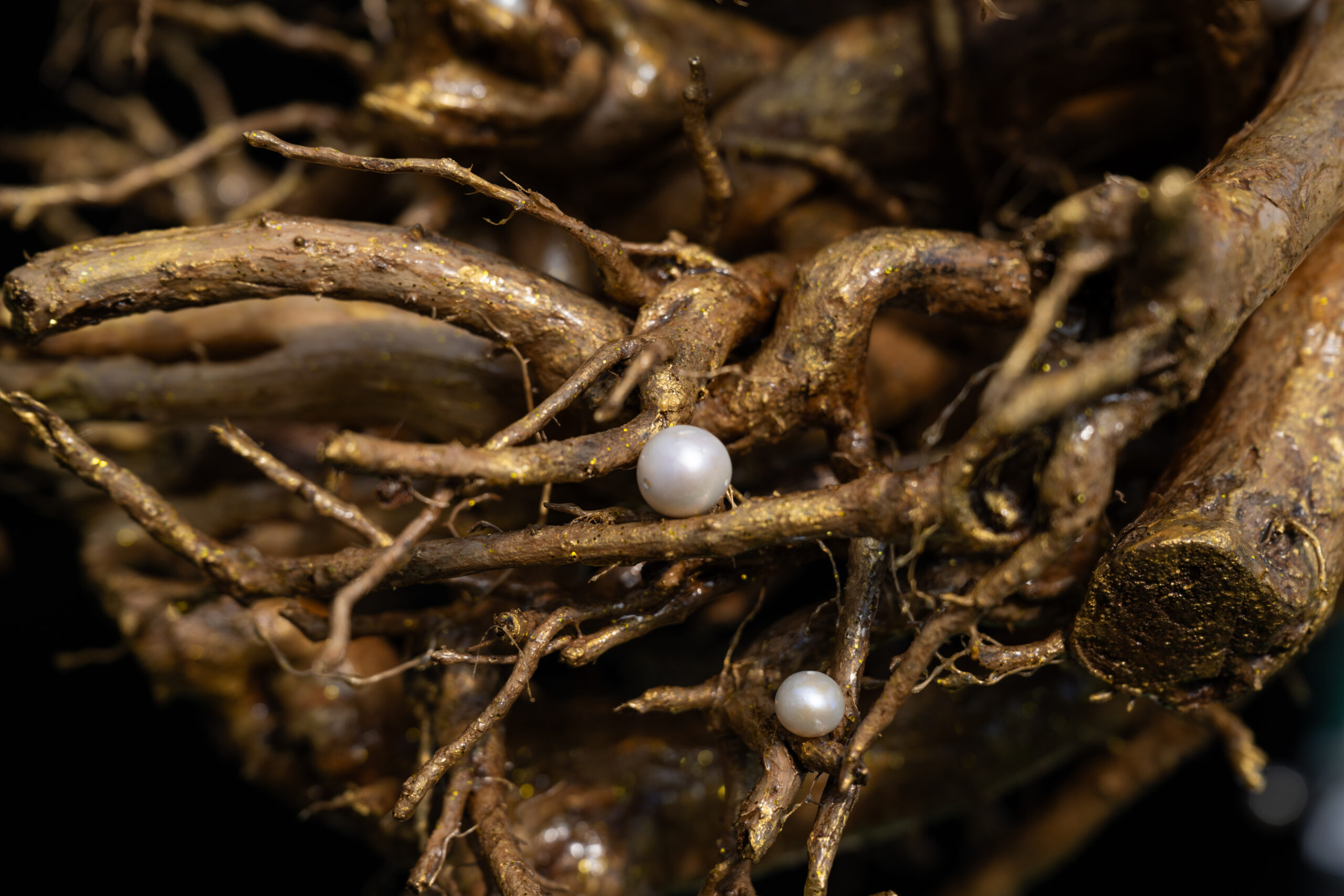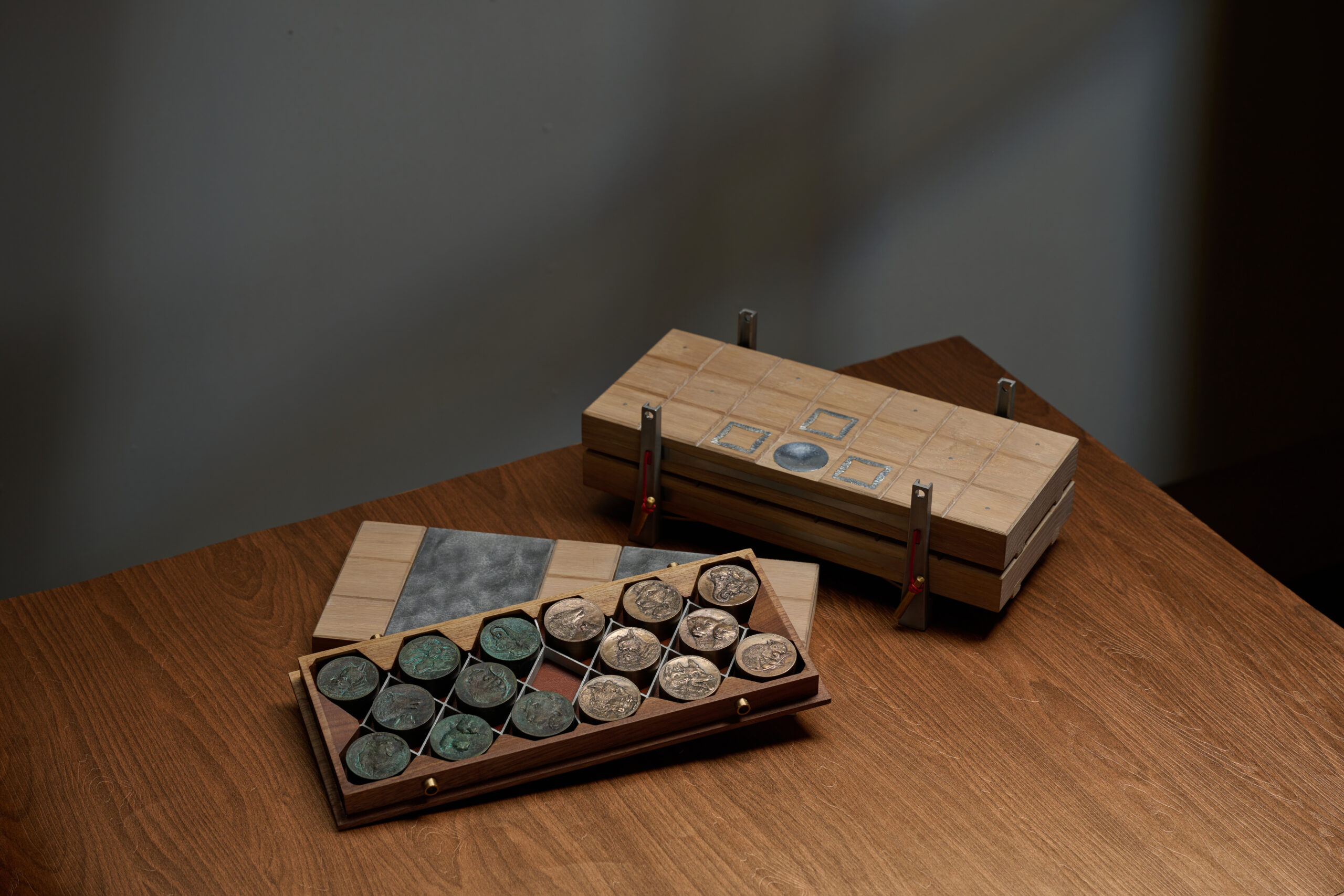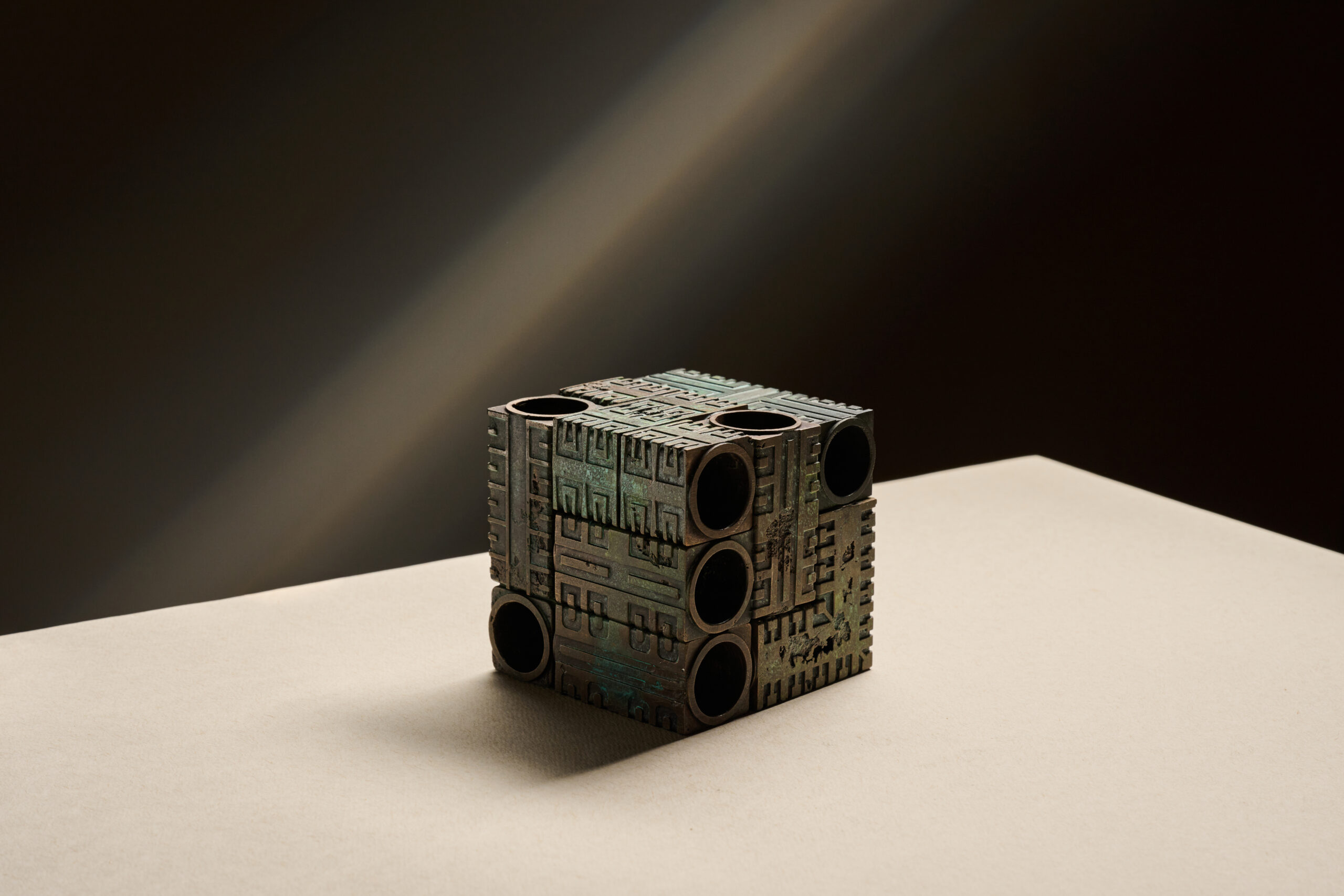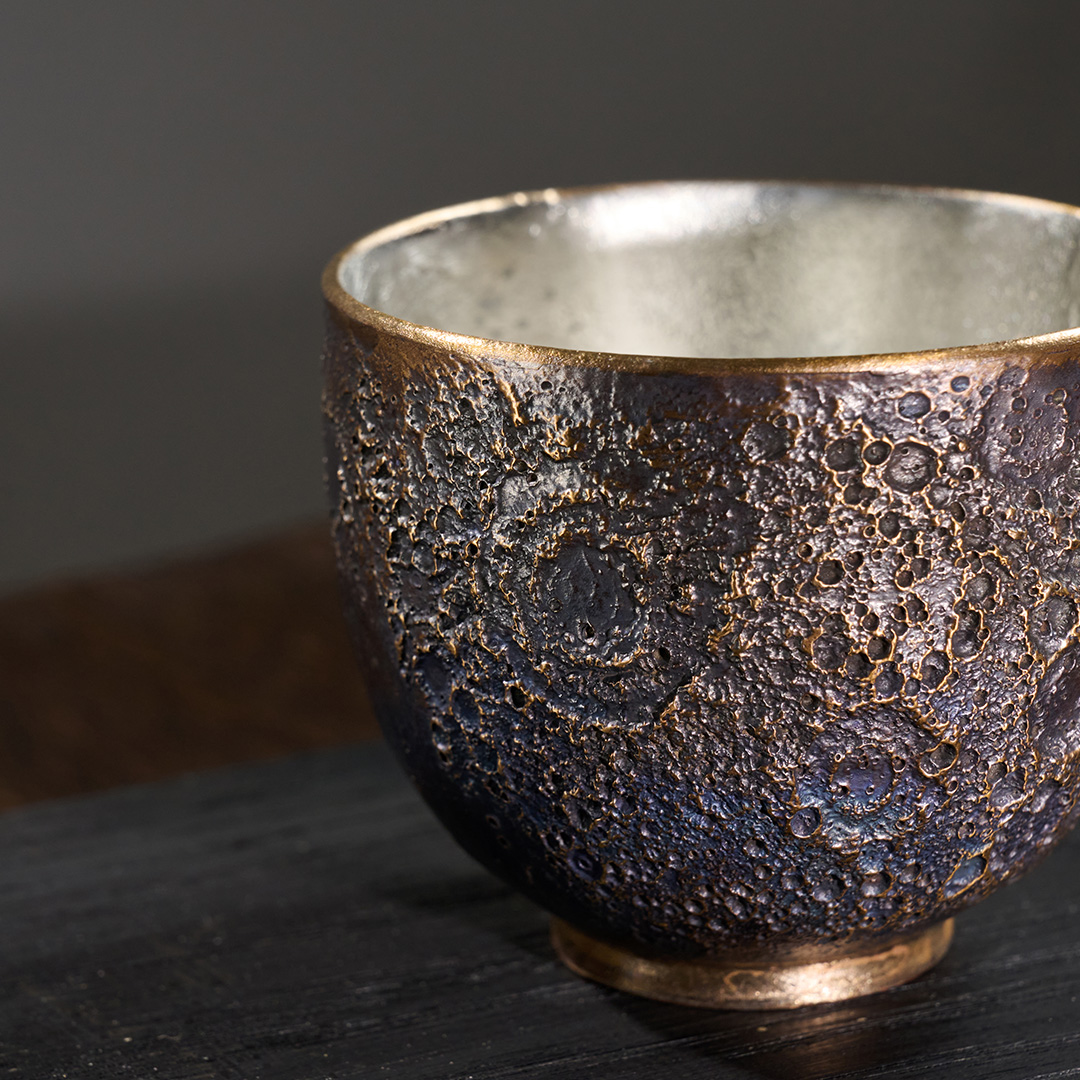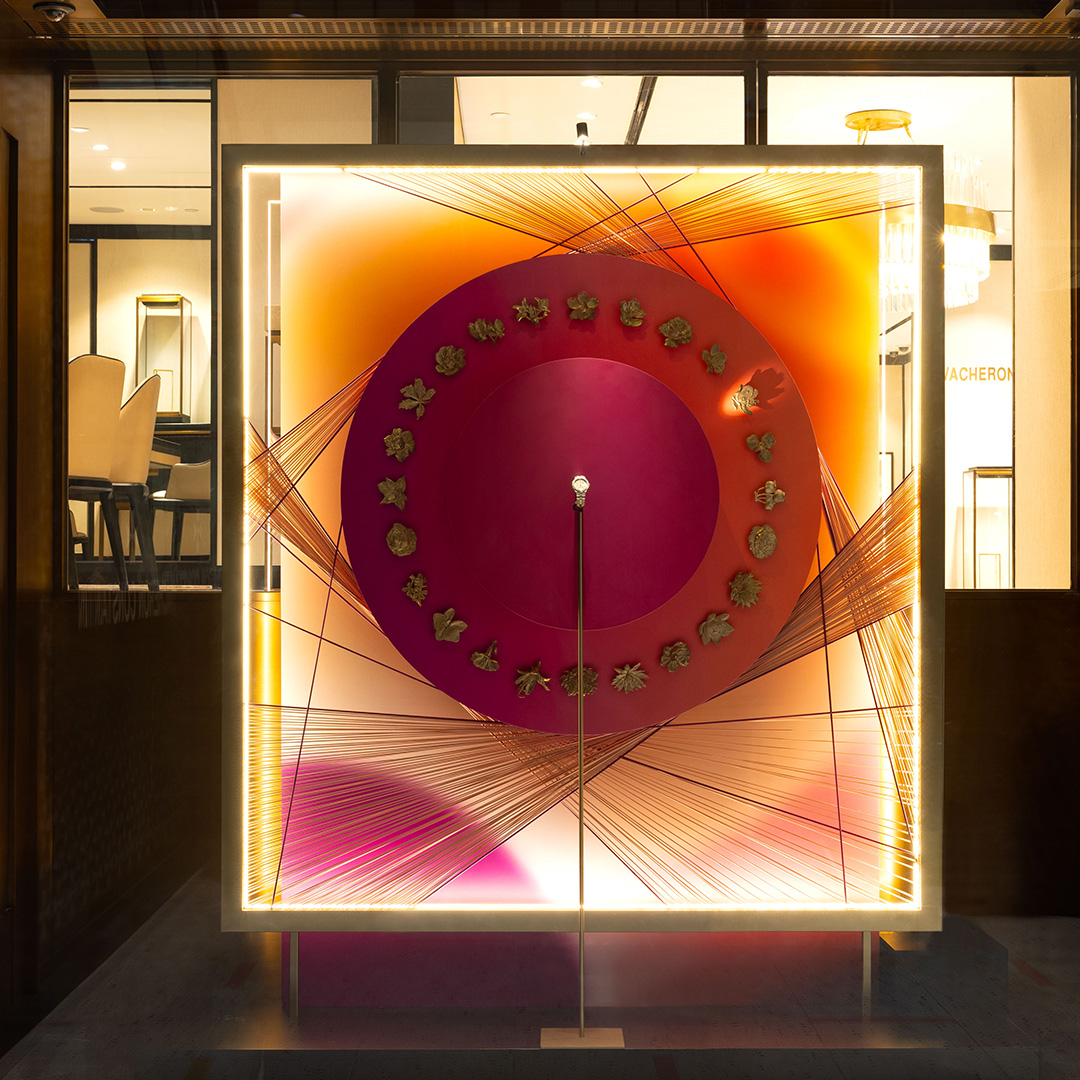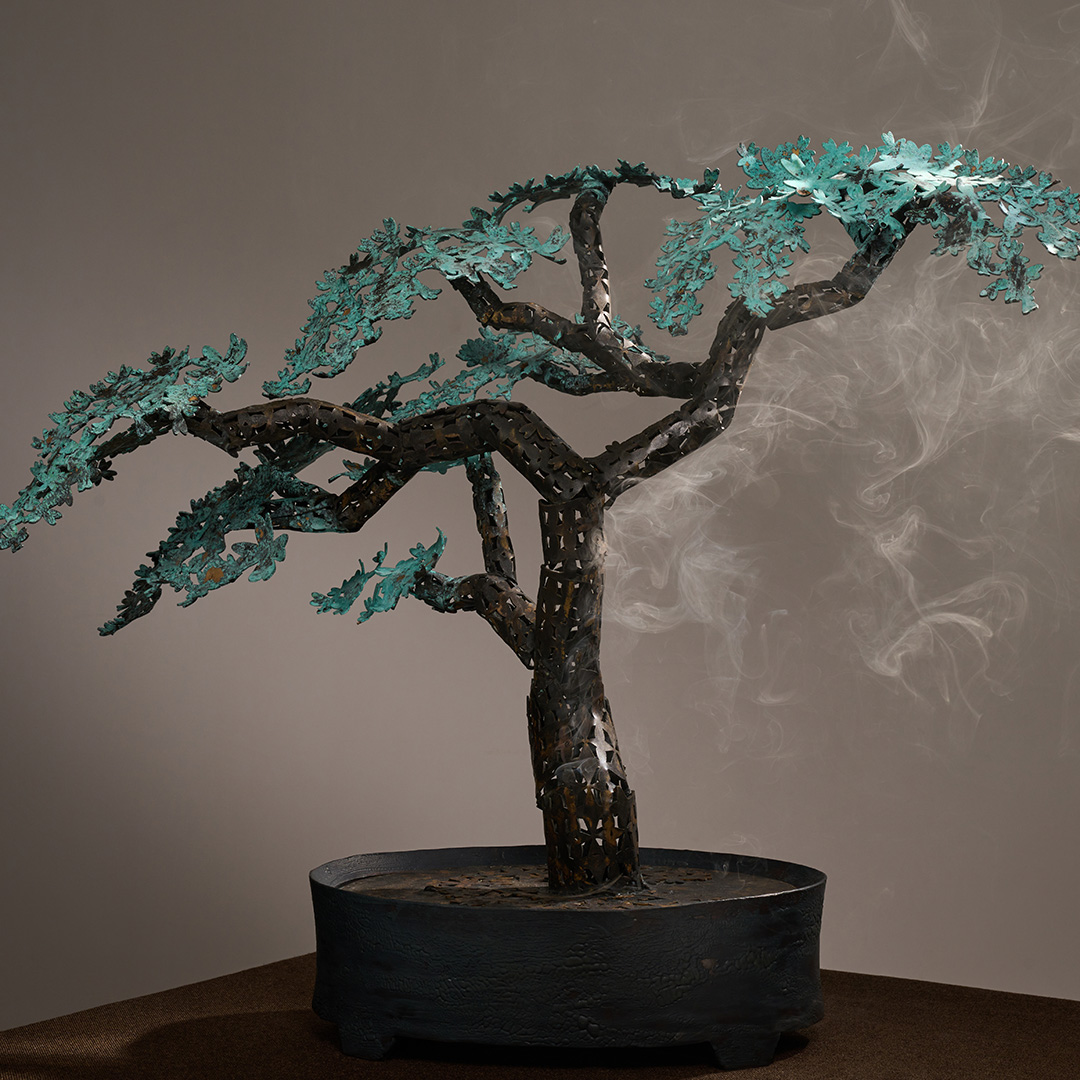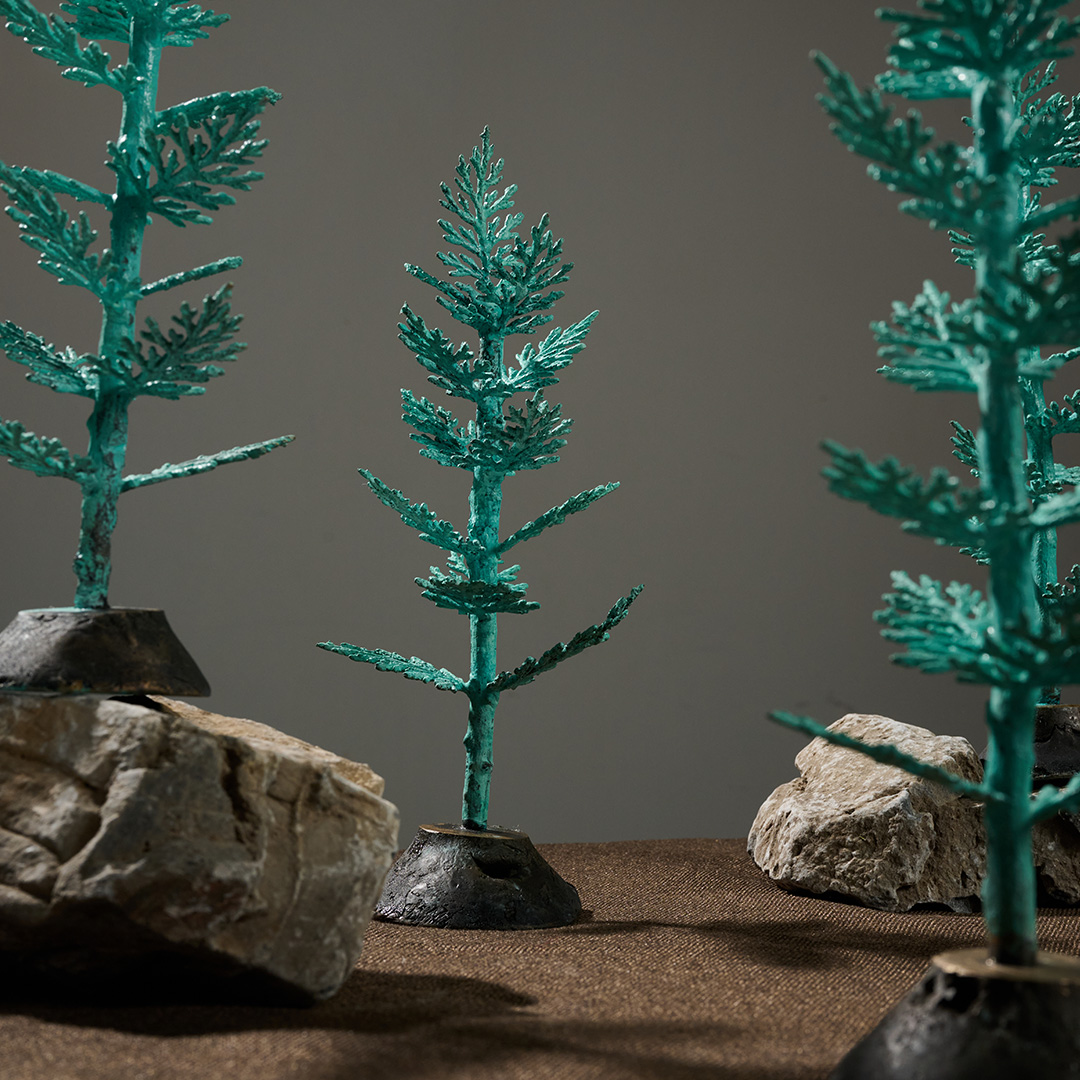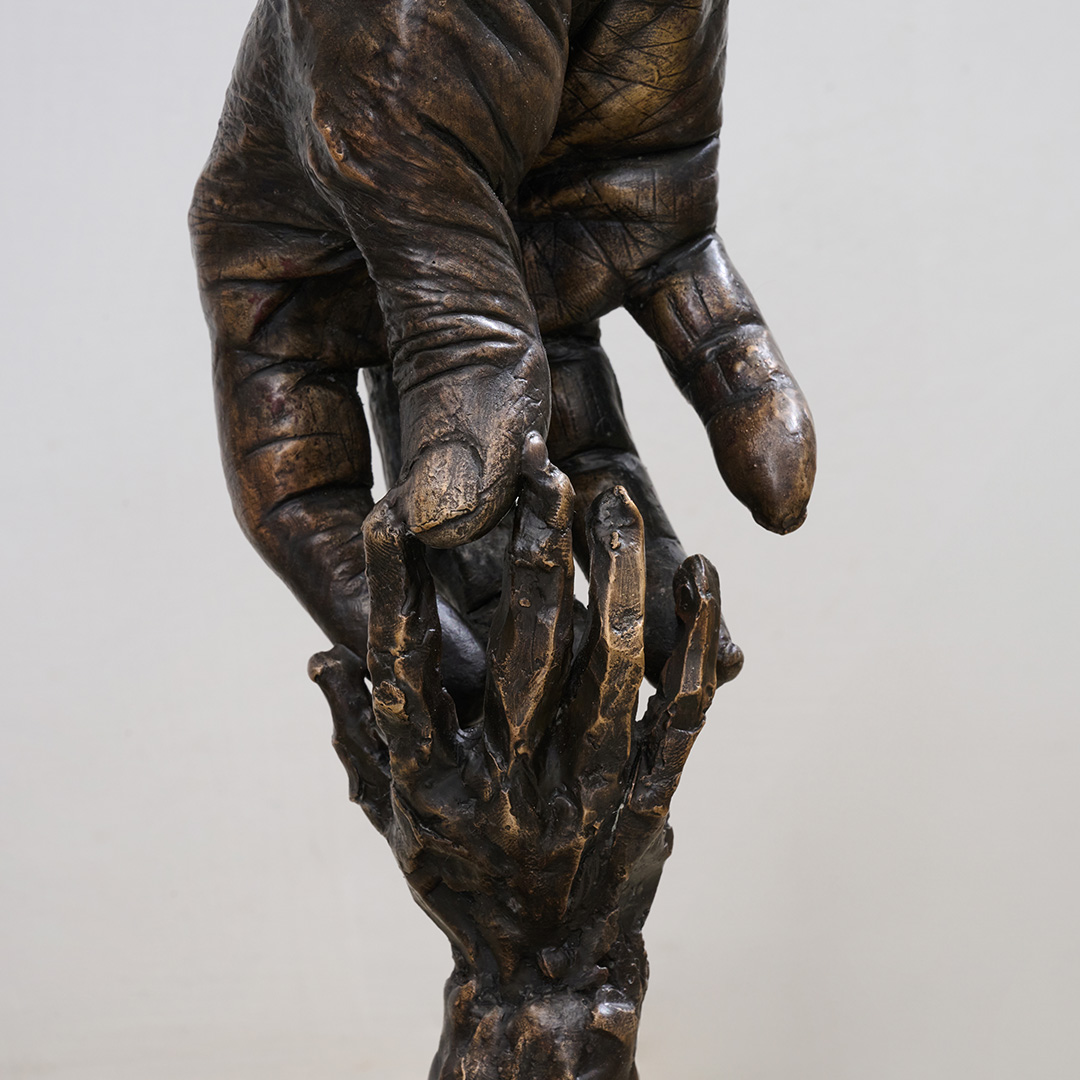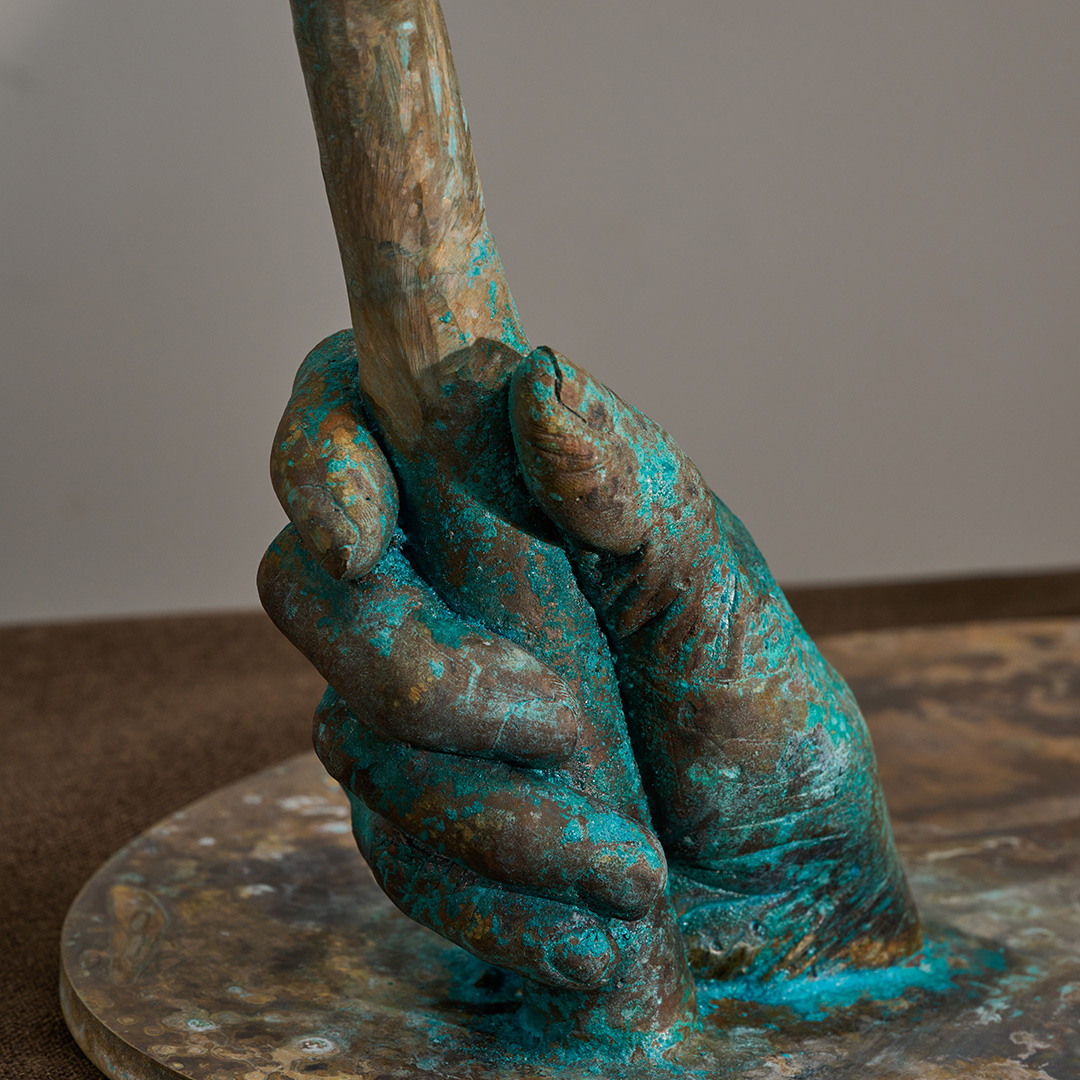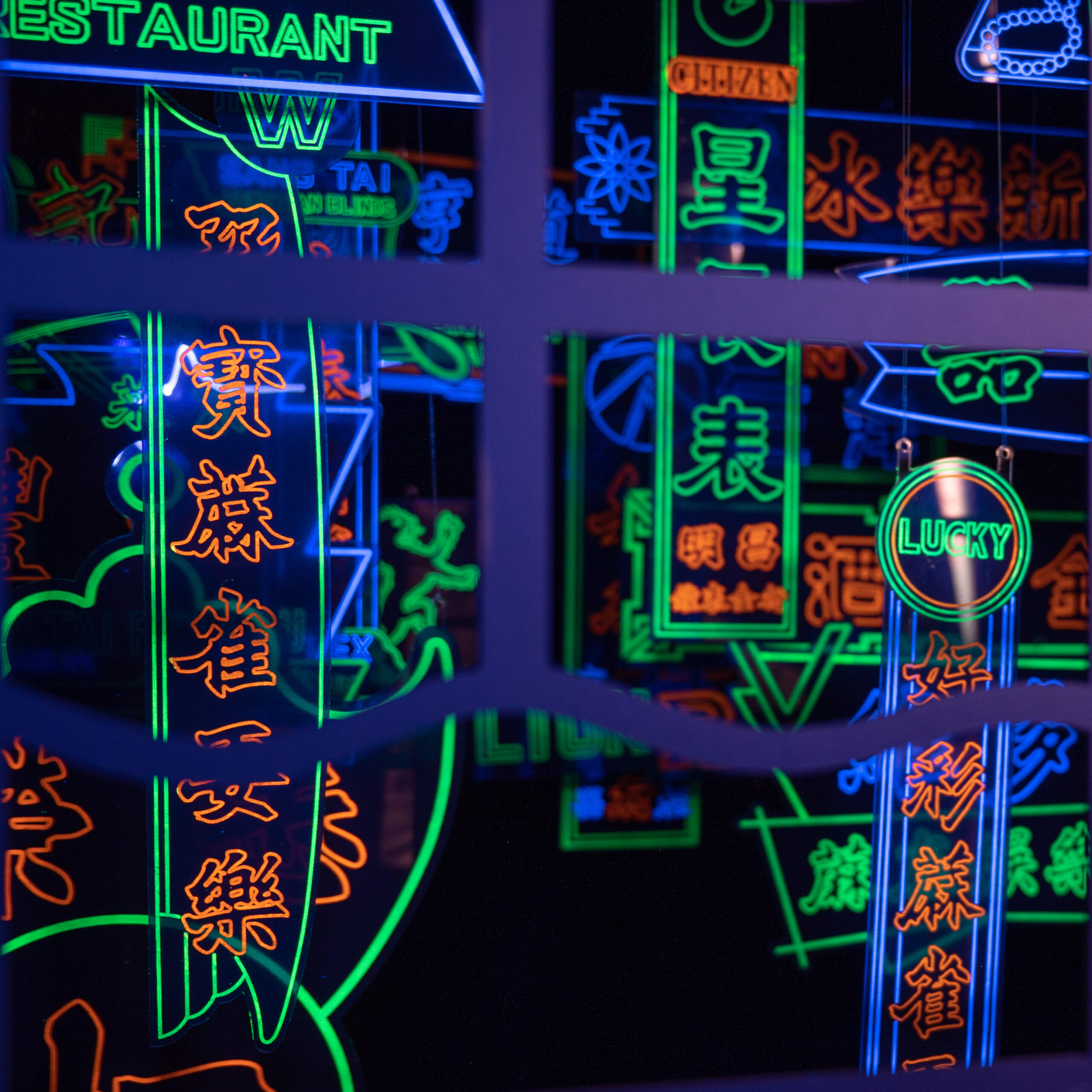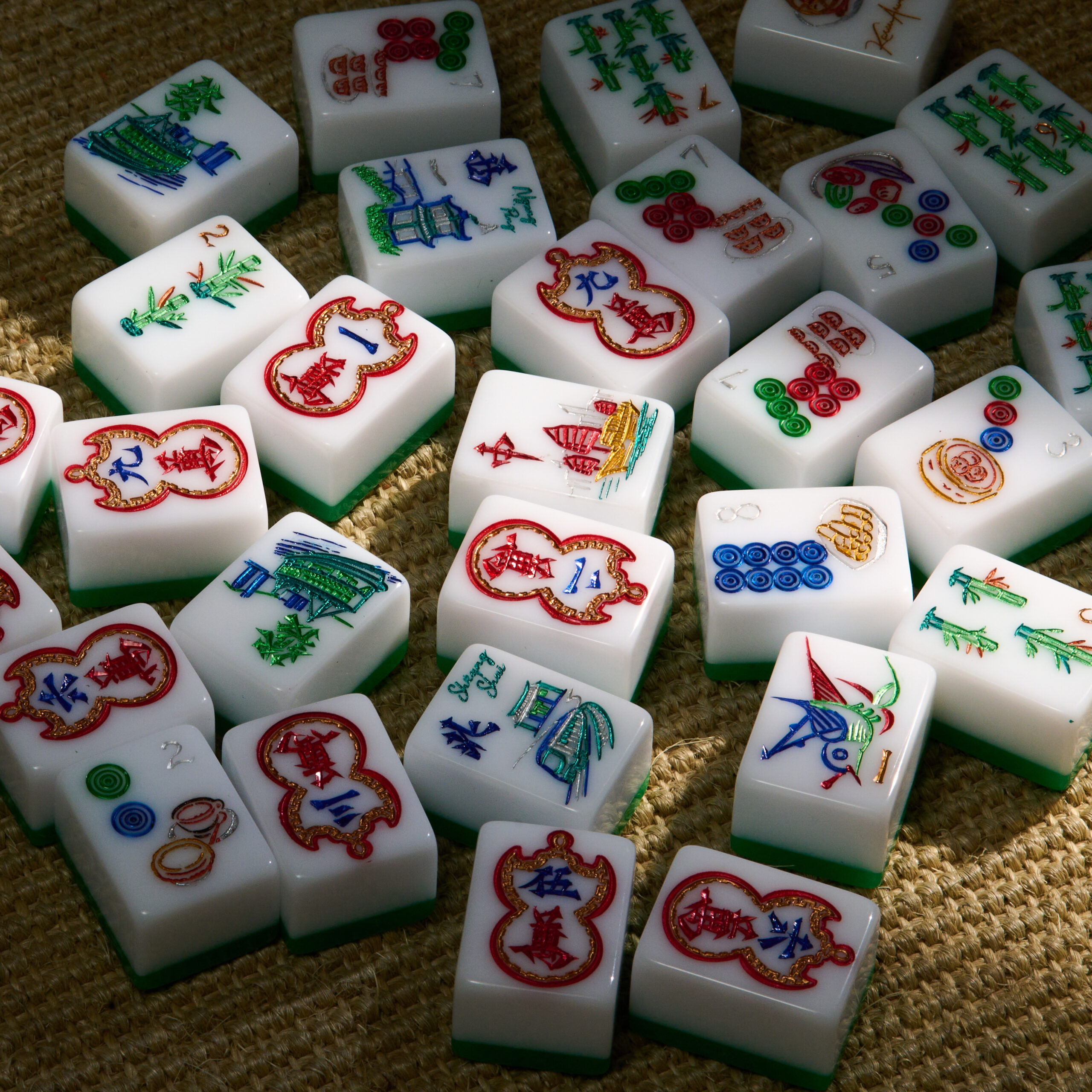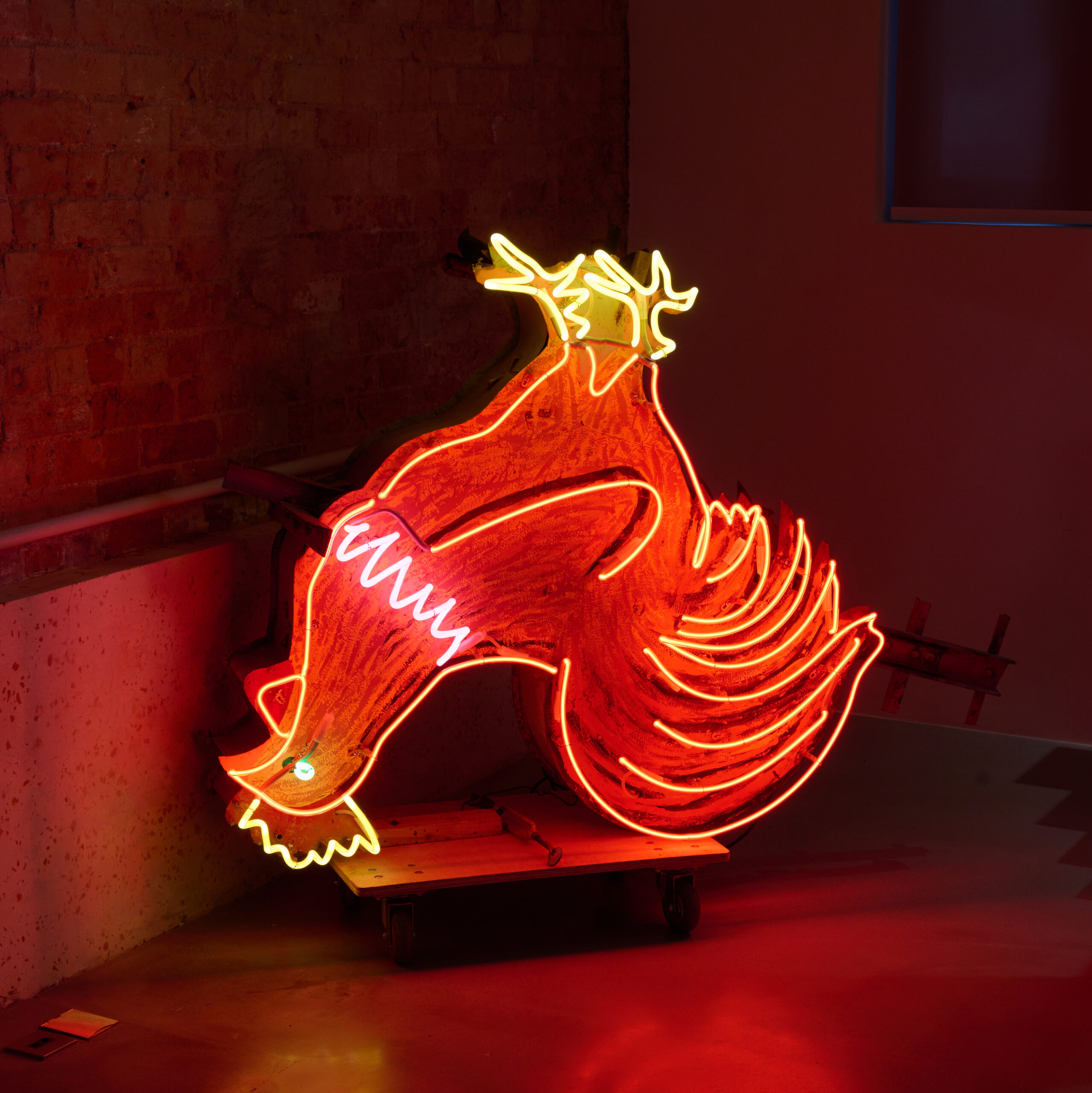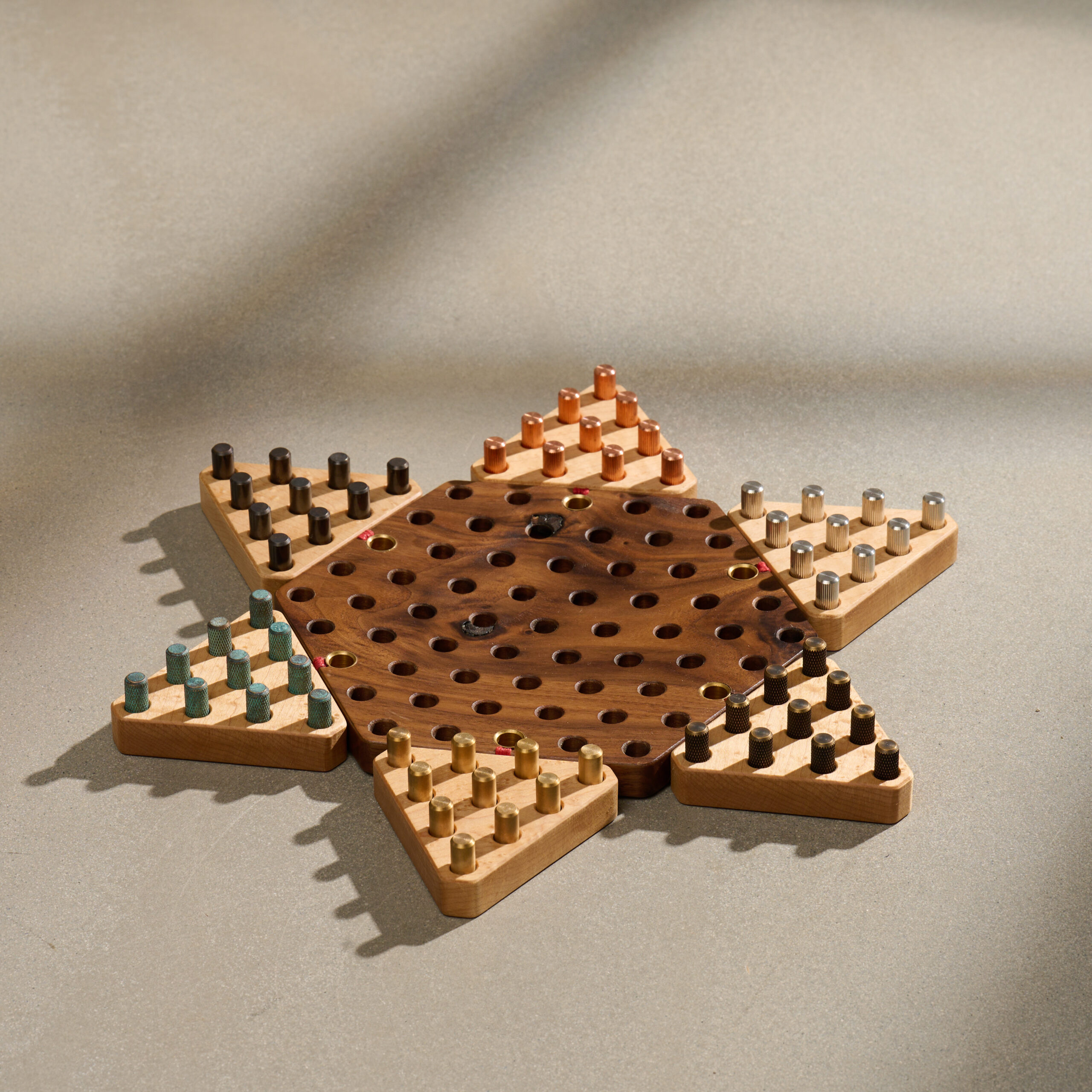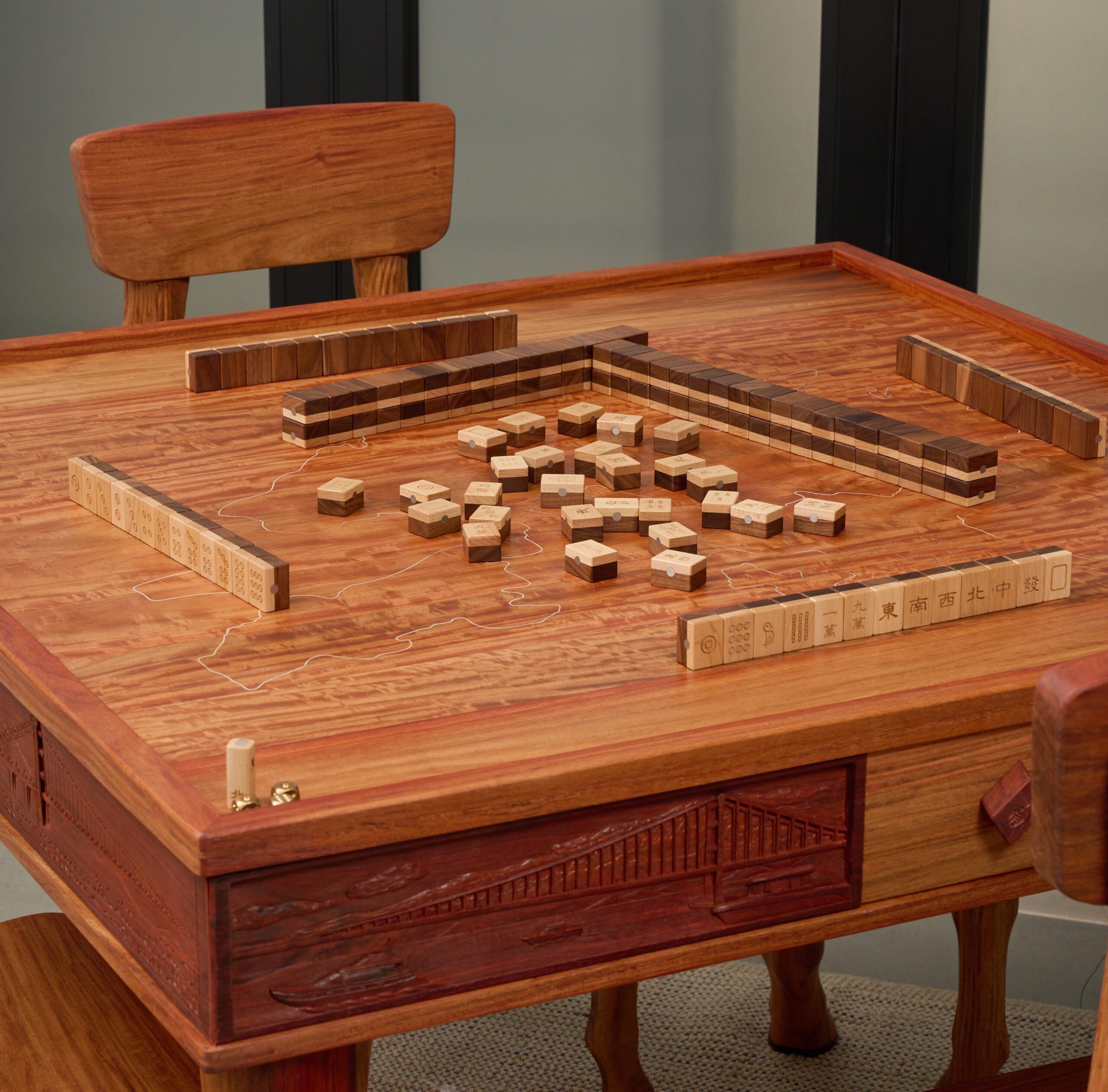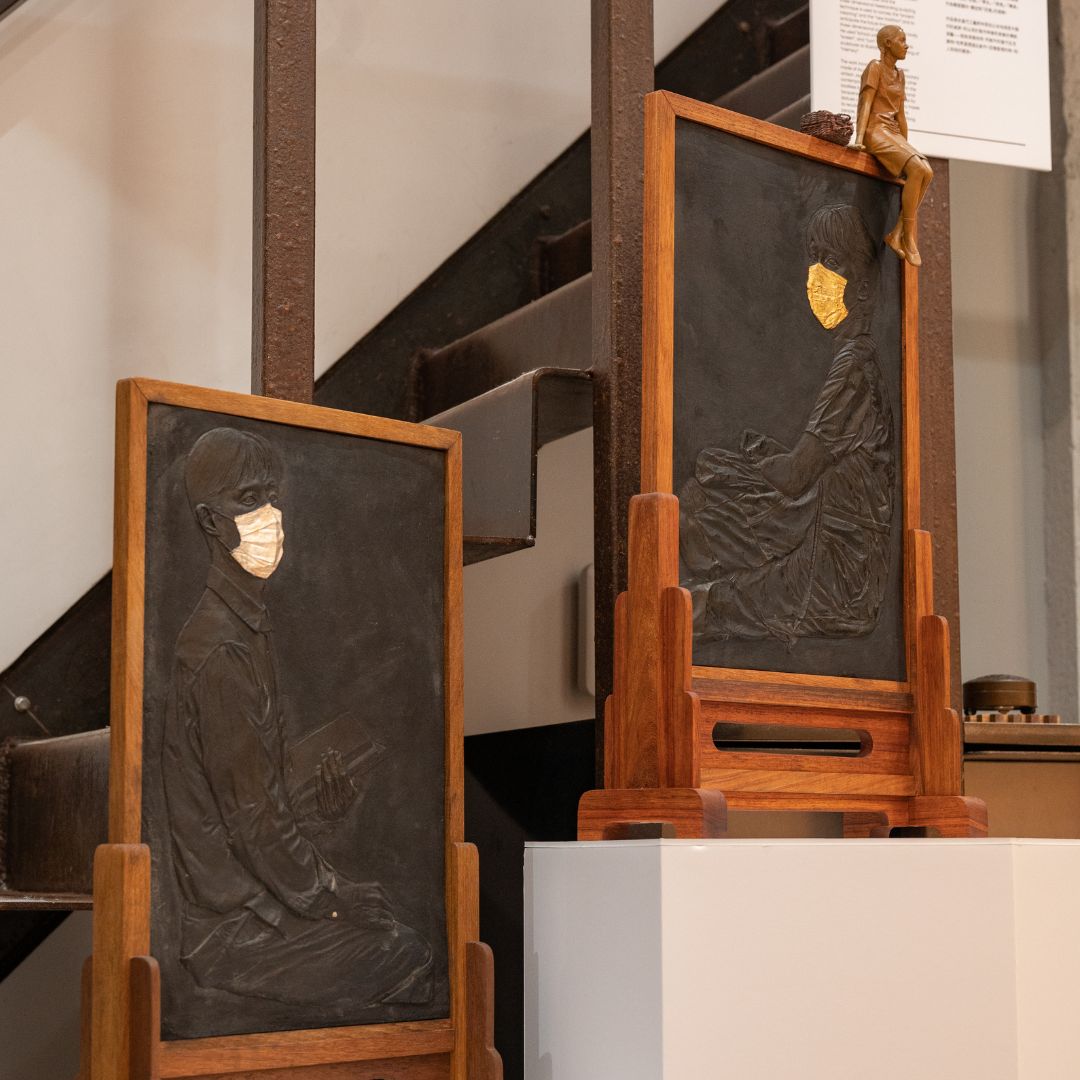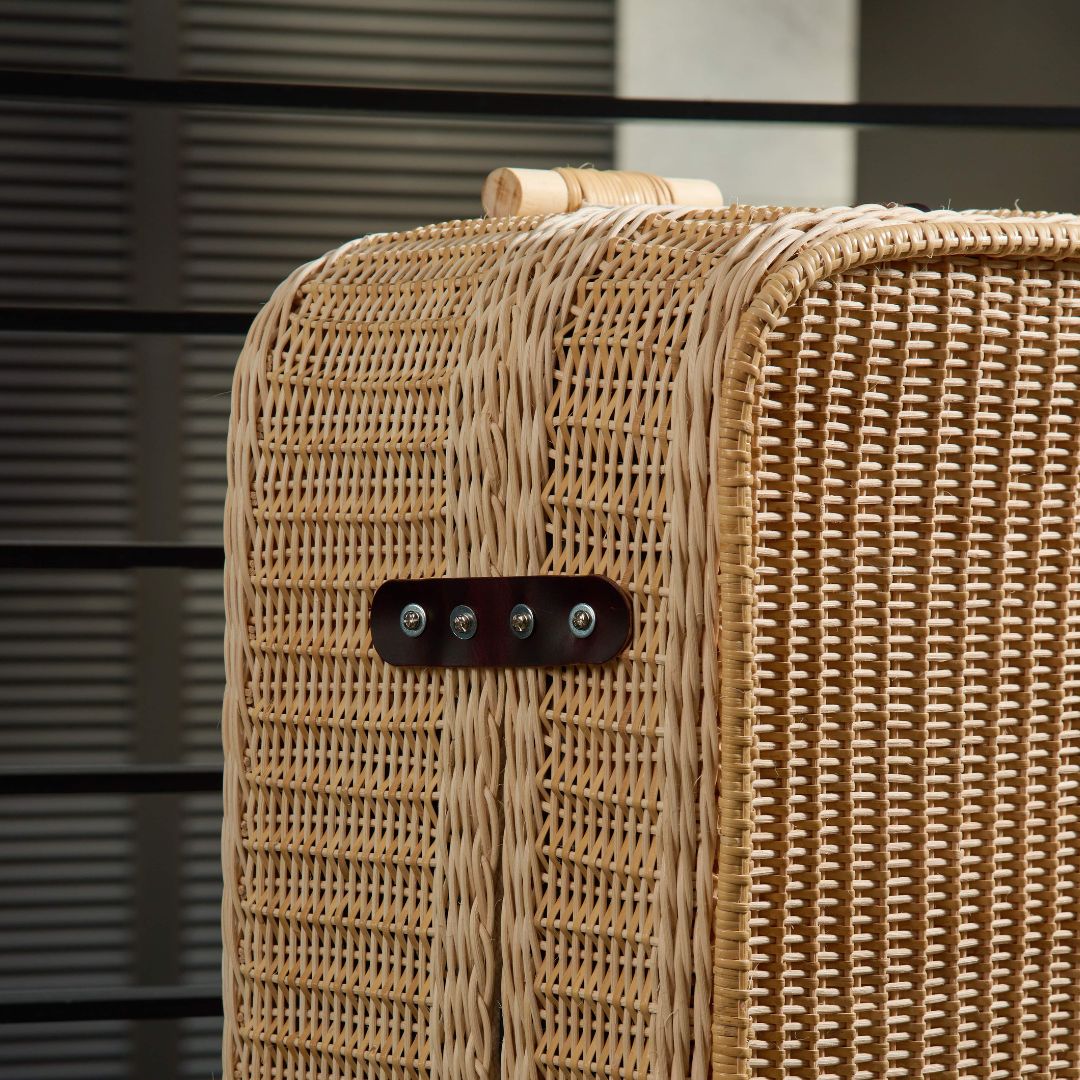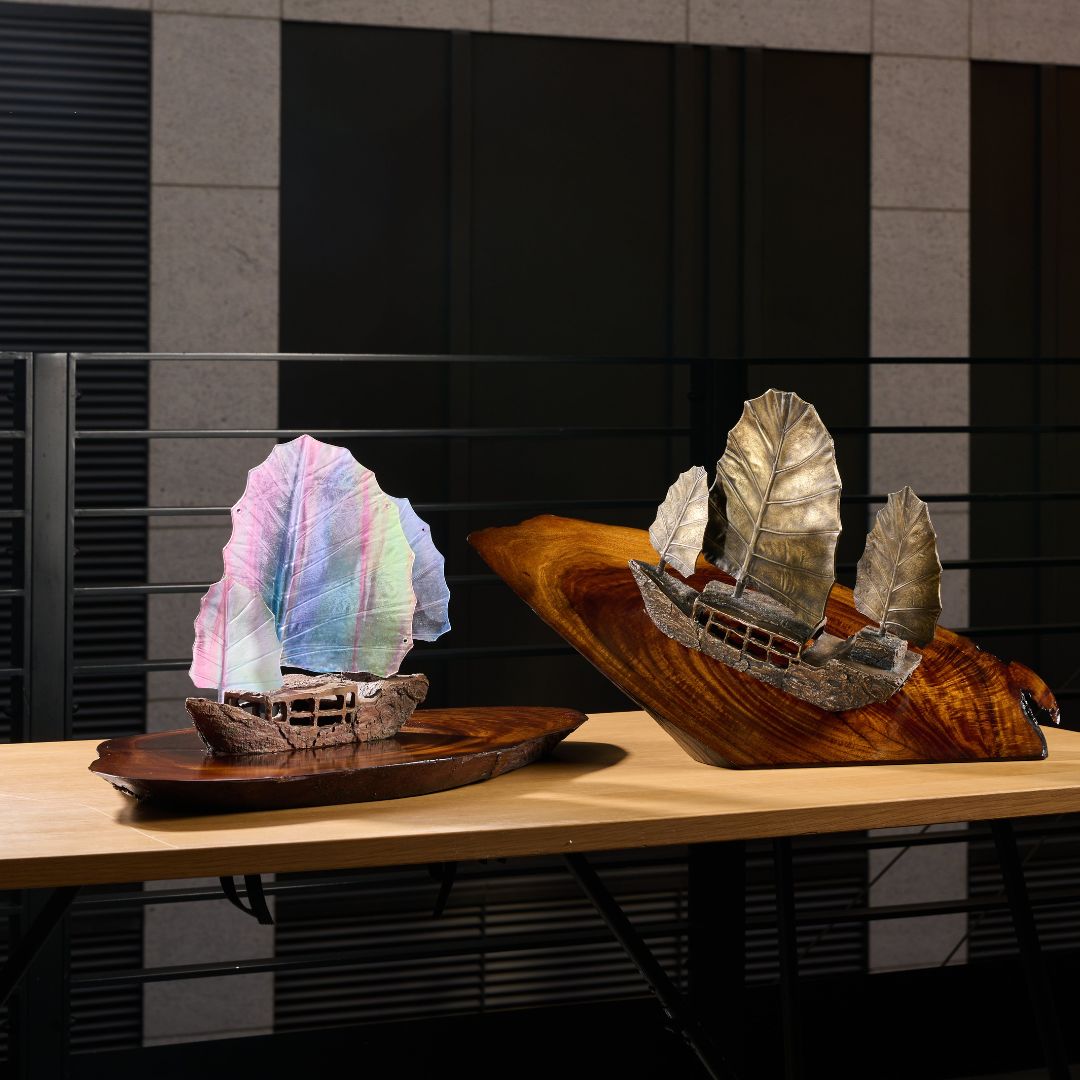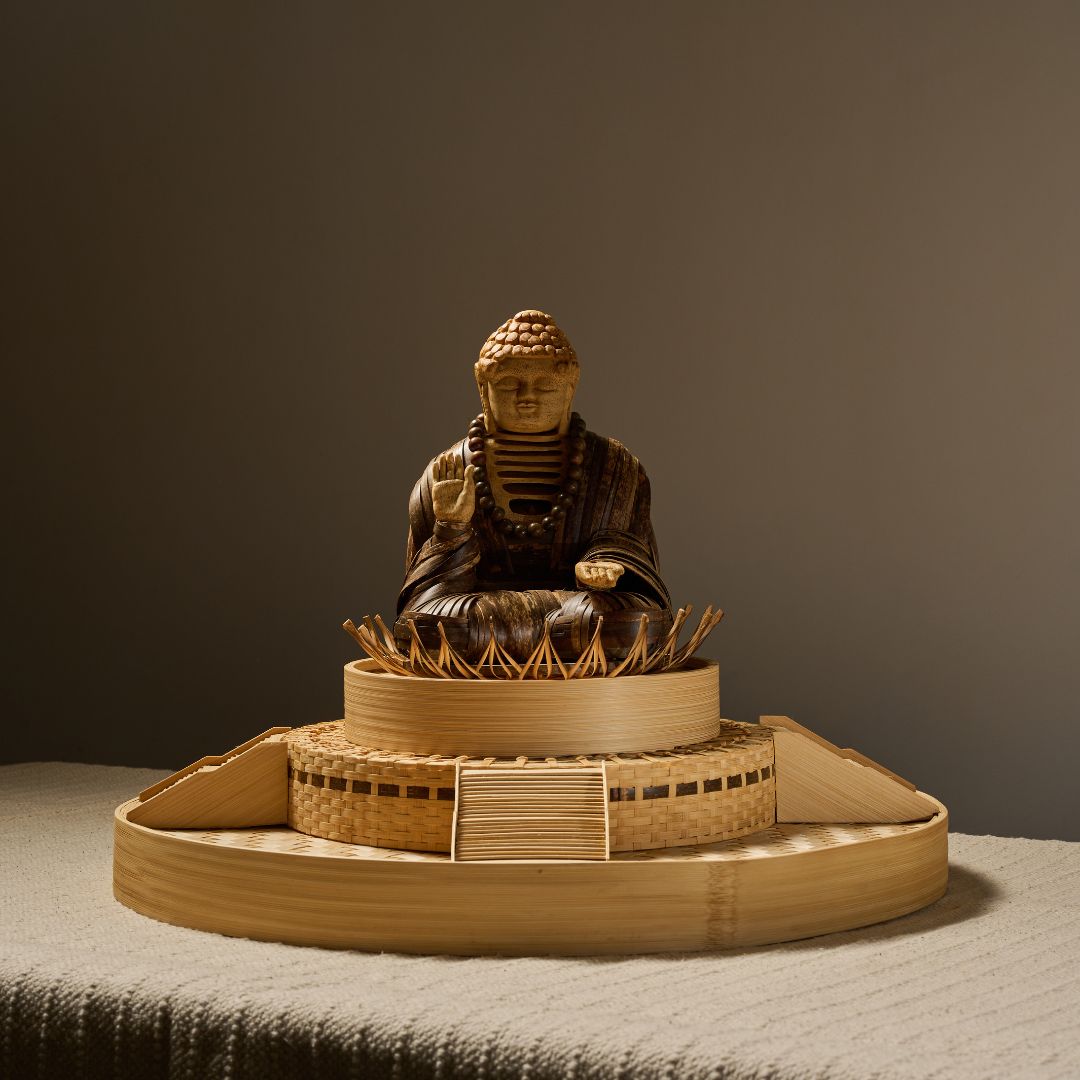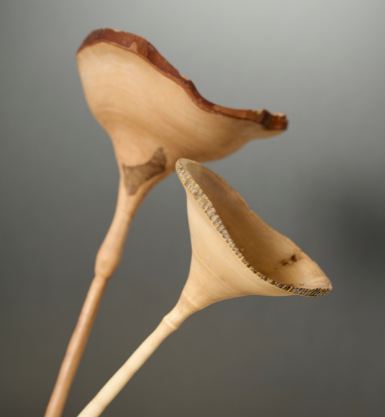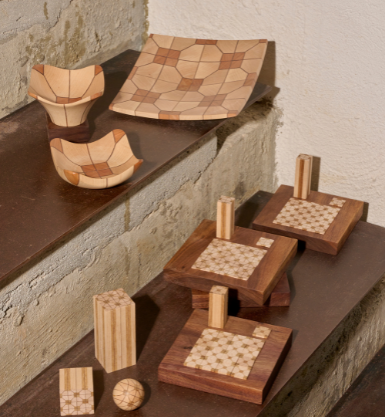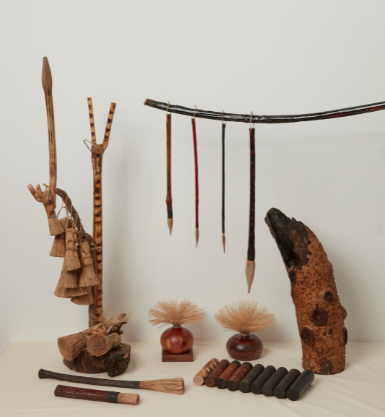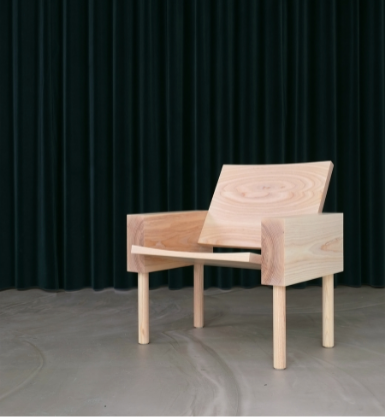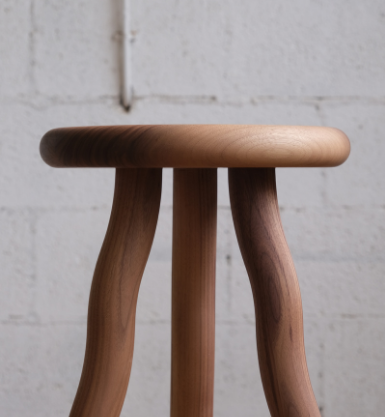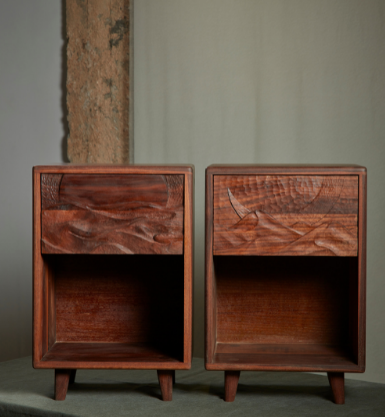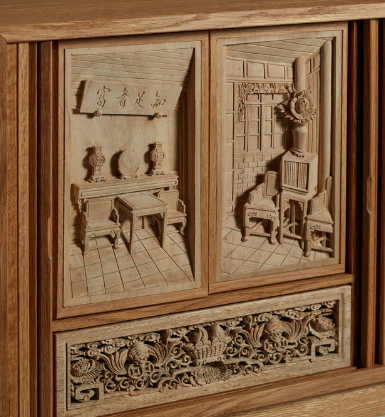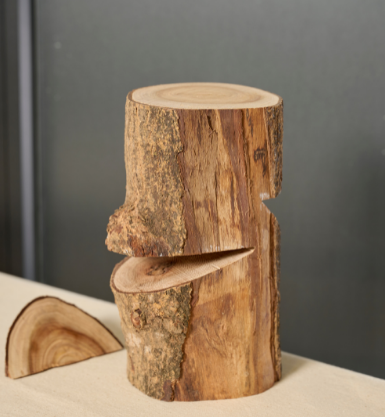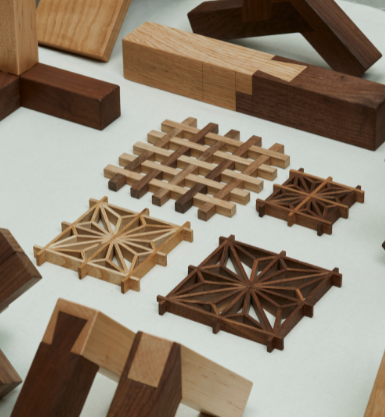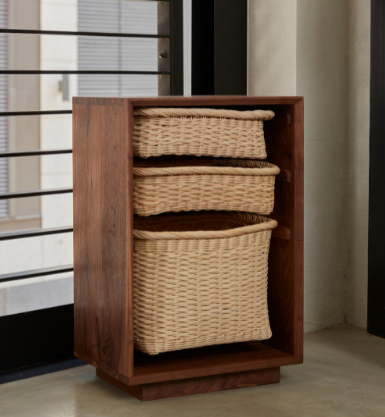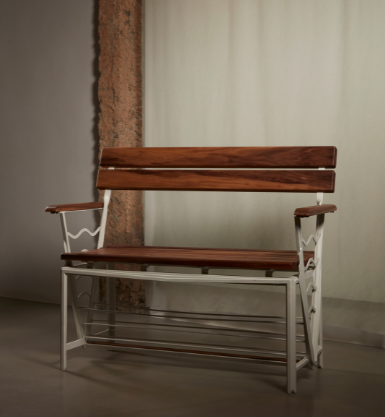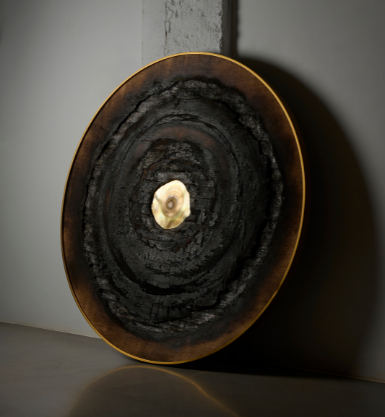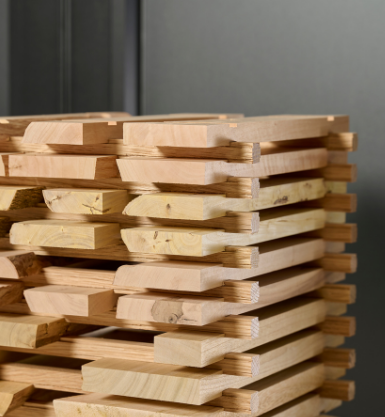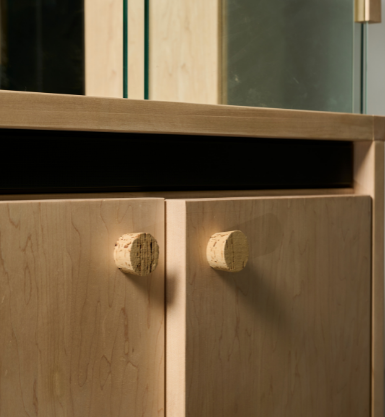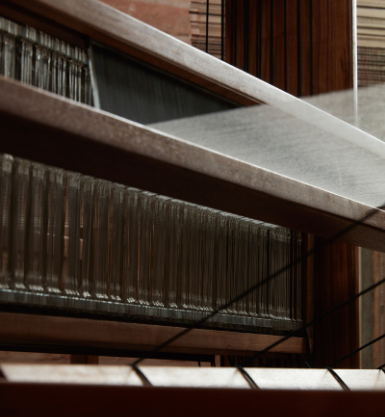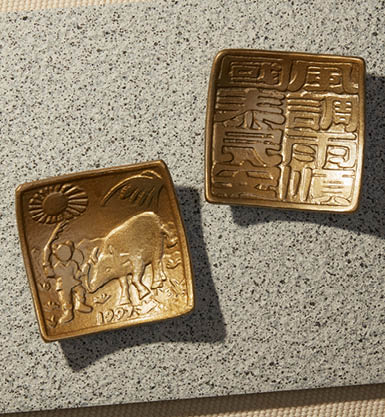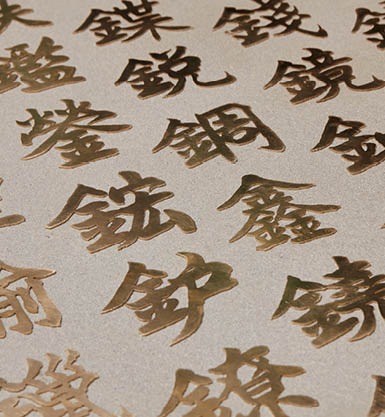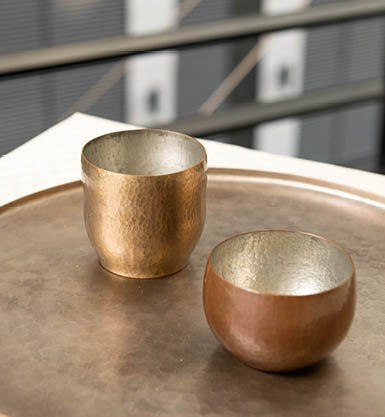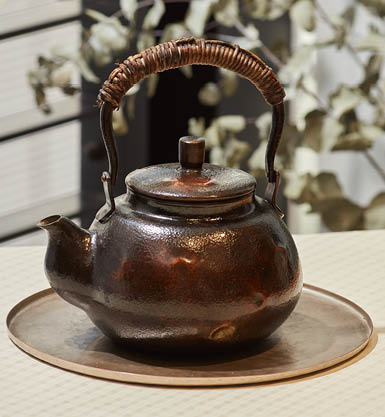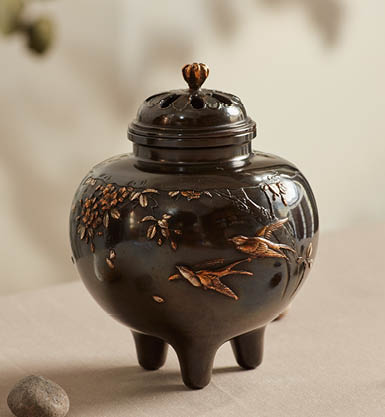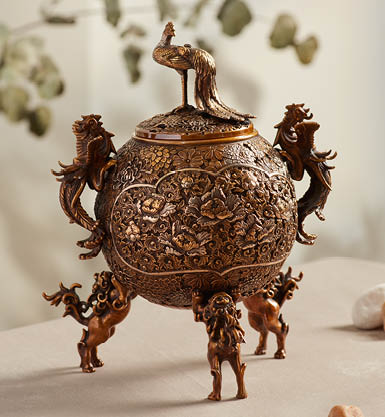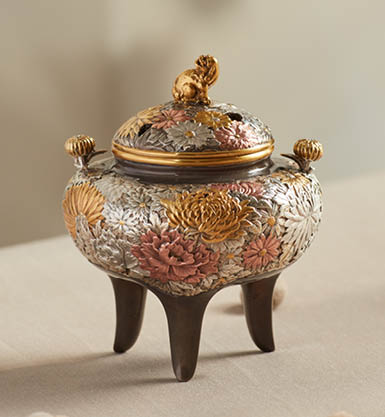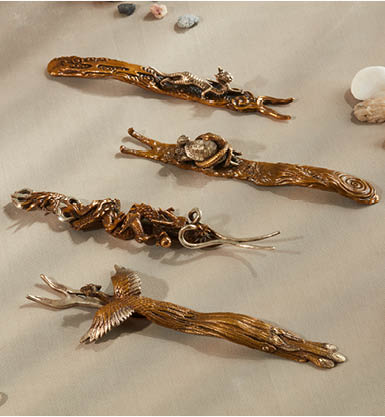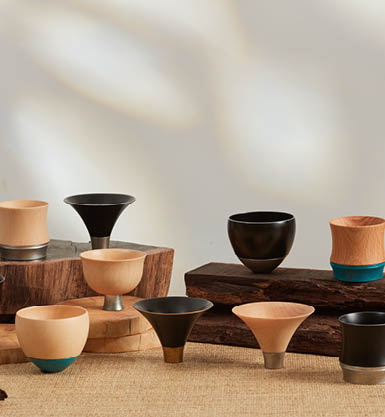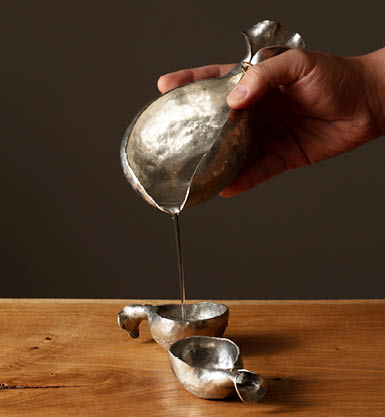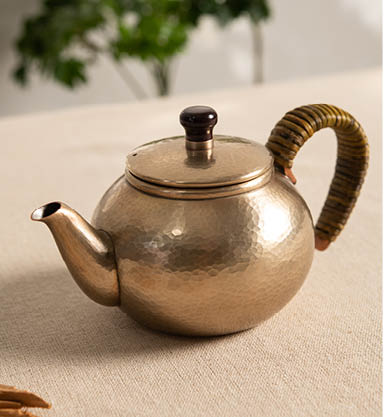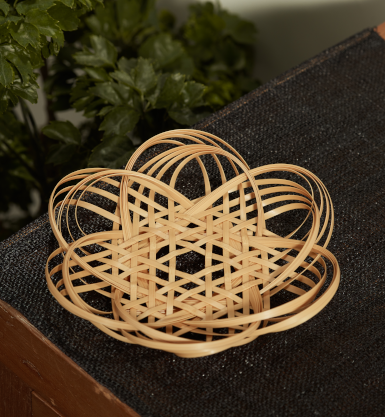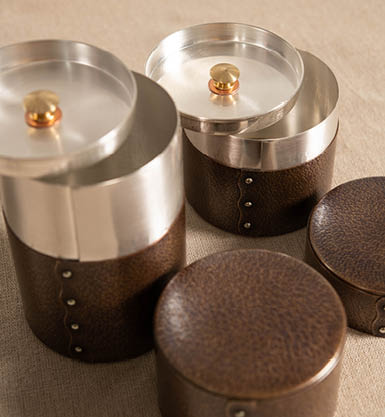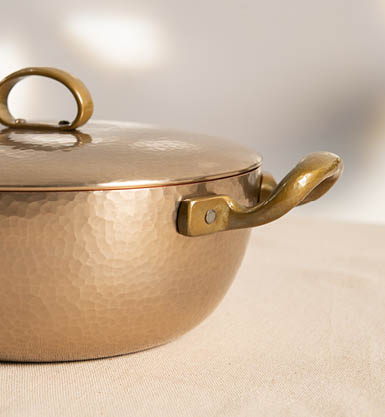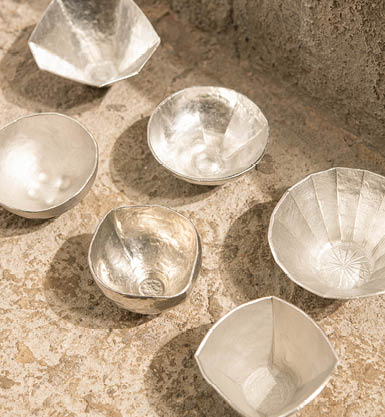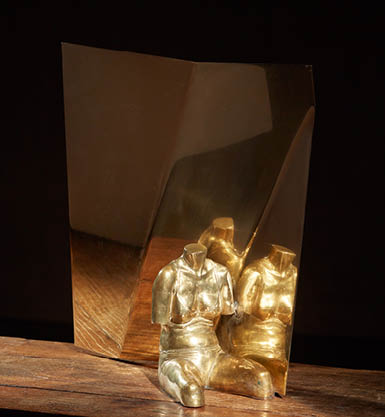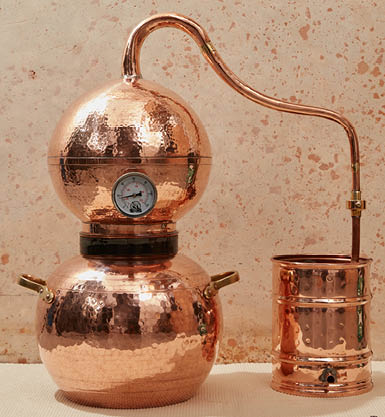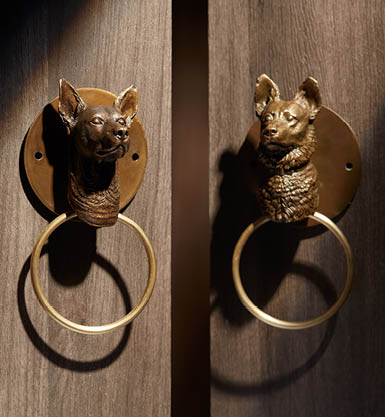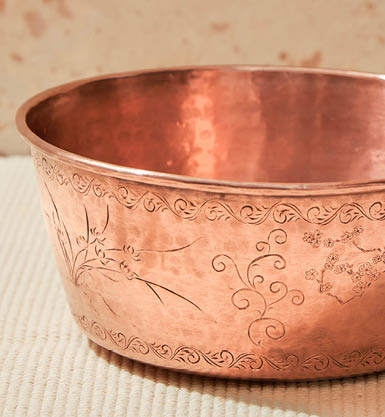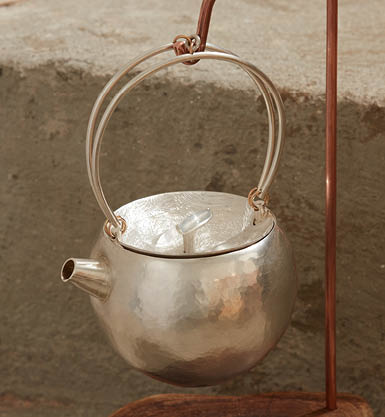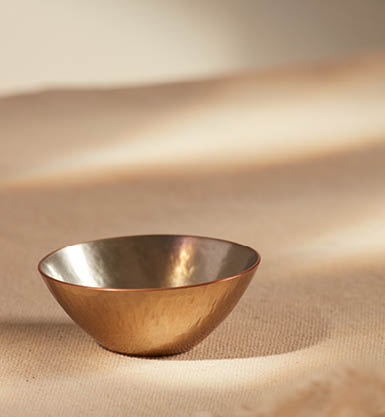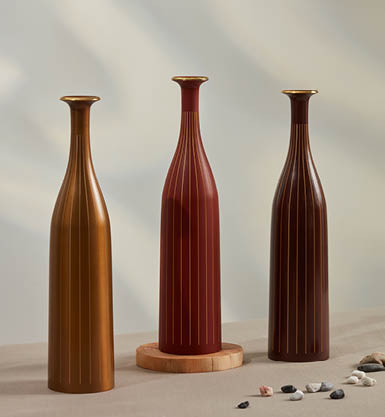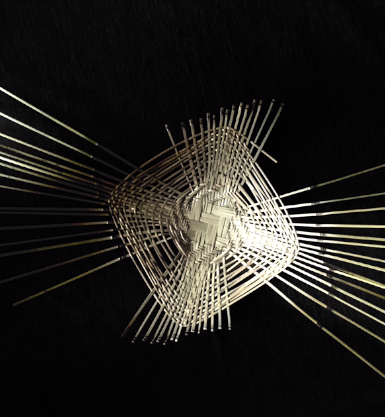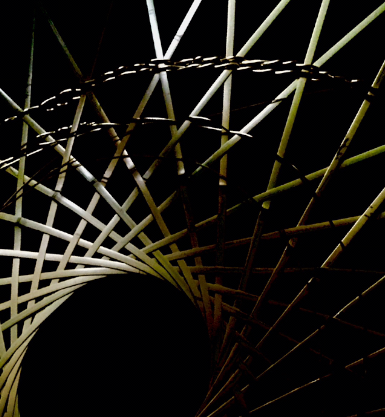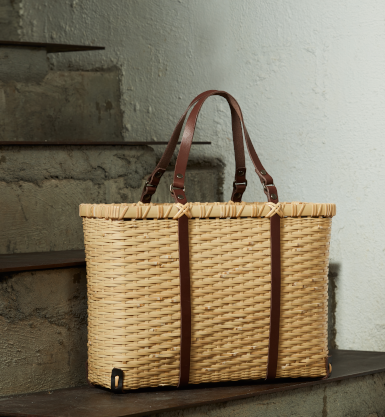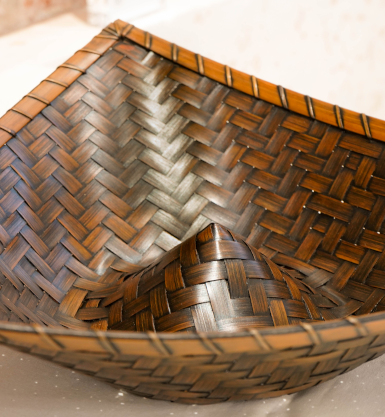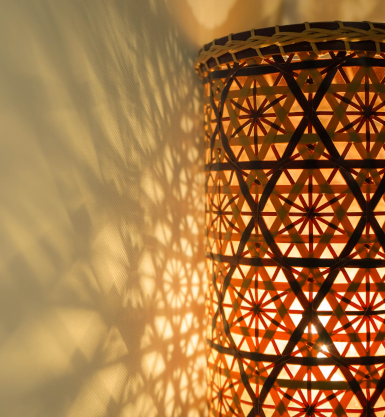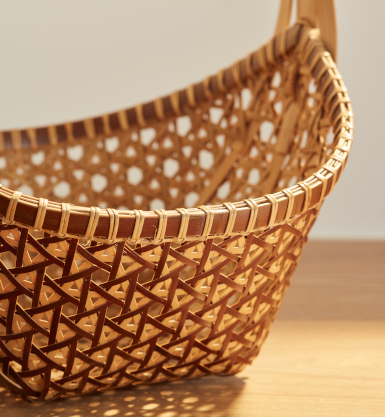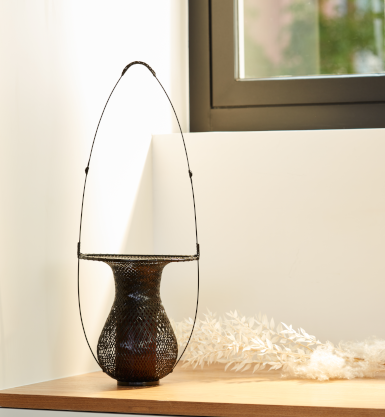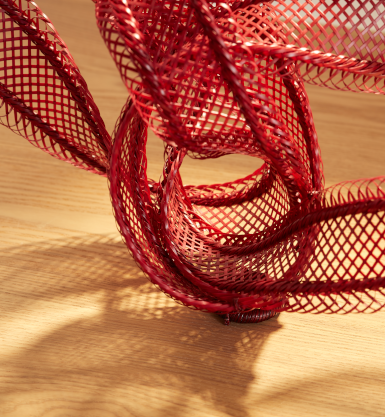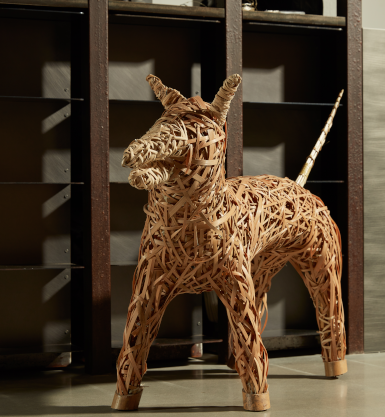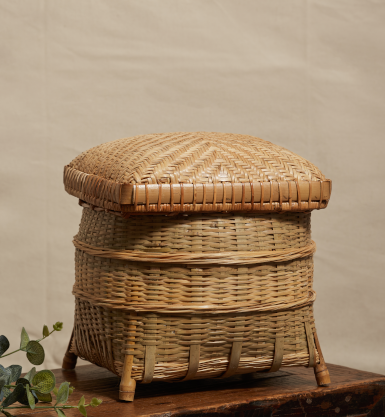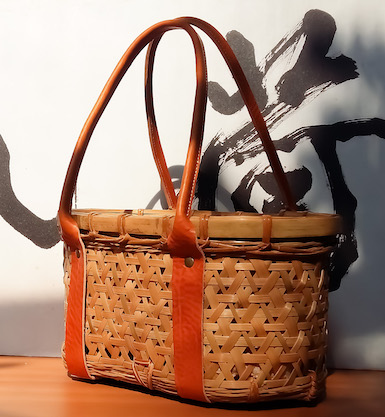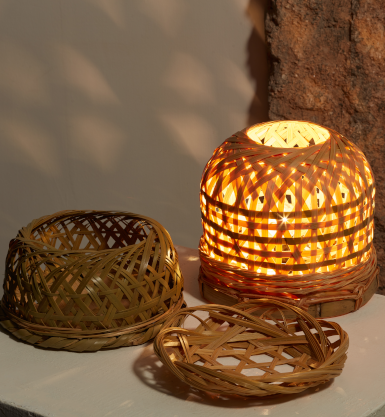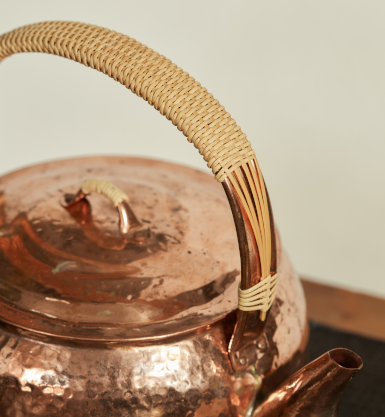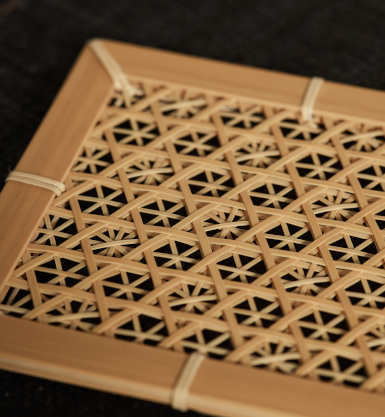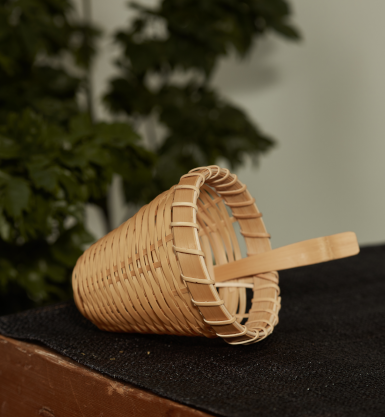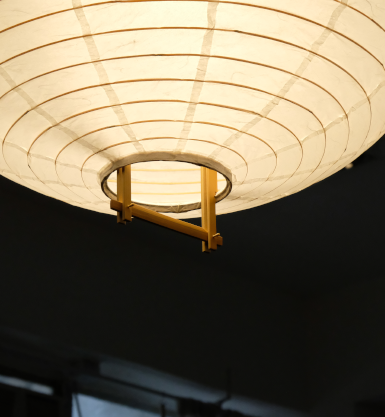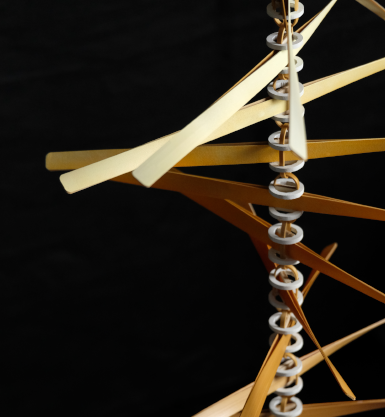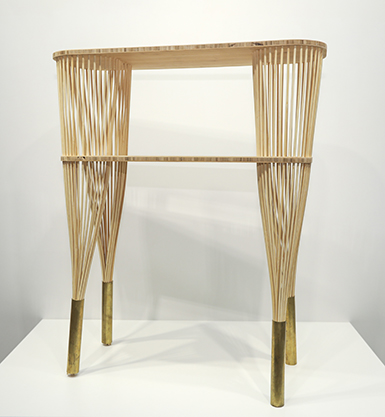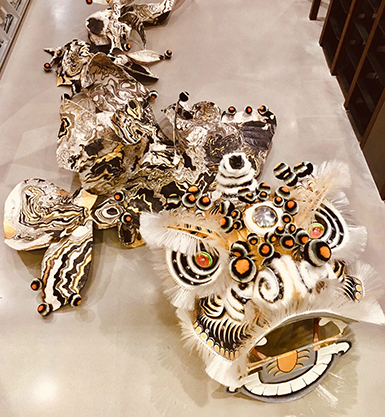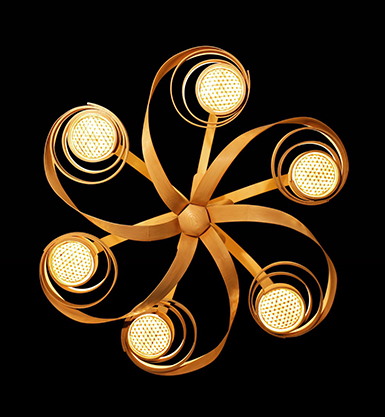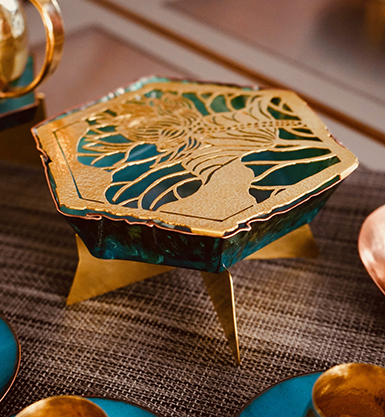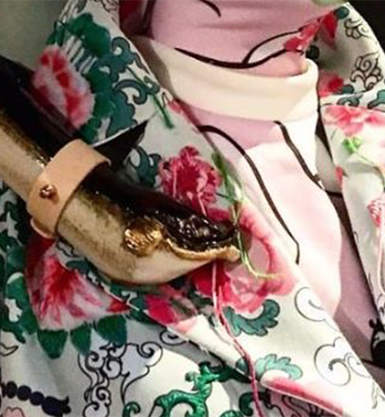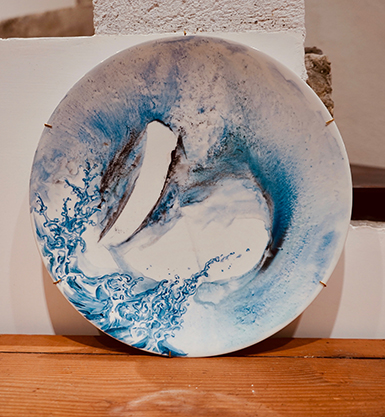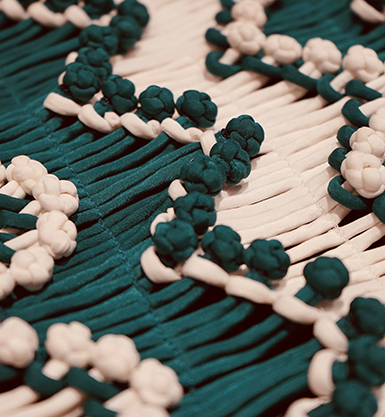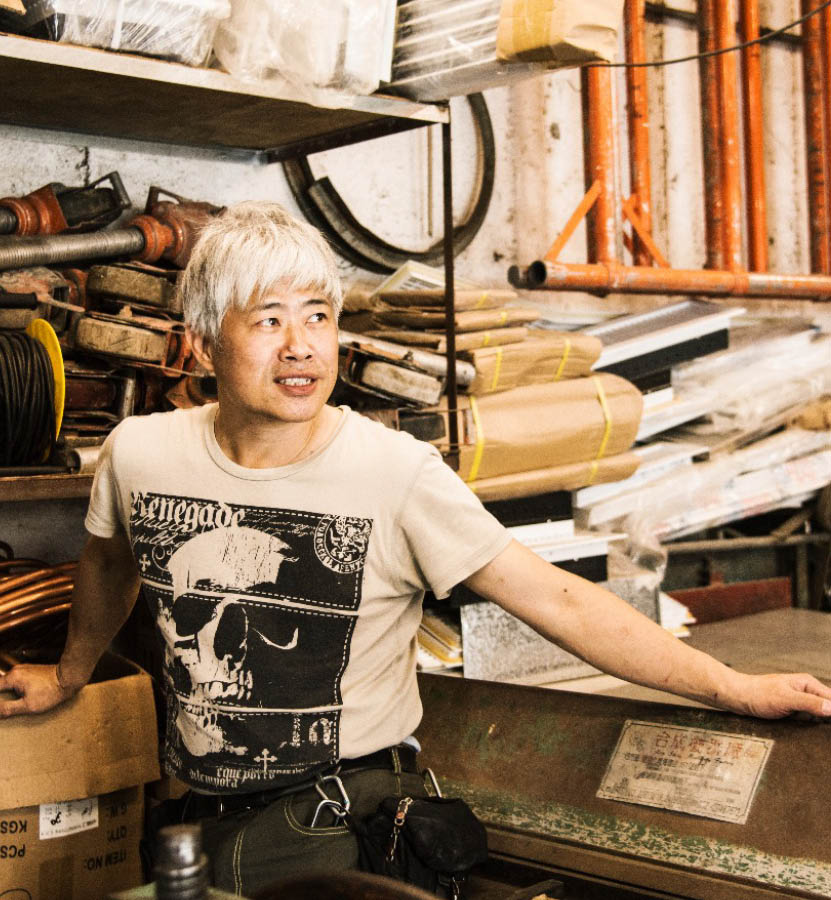Yuen
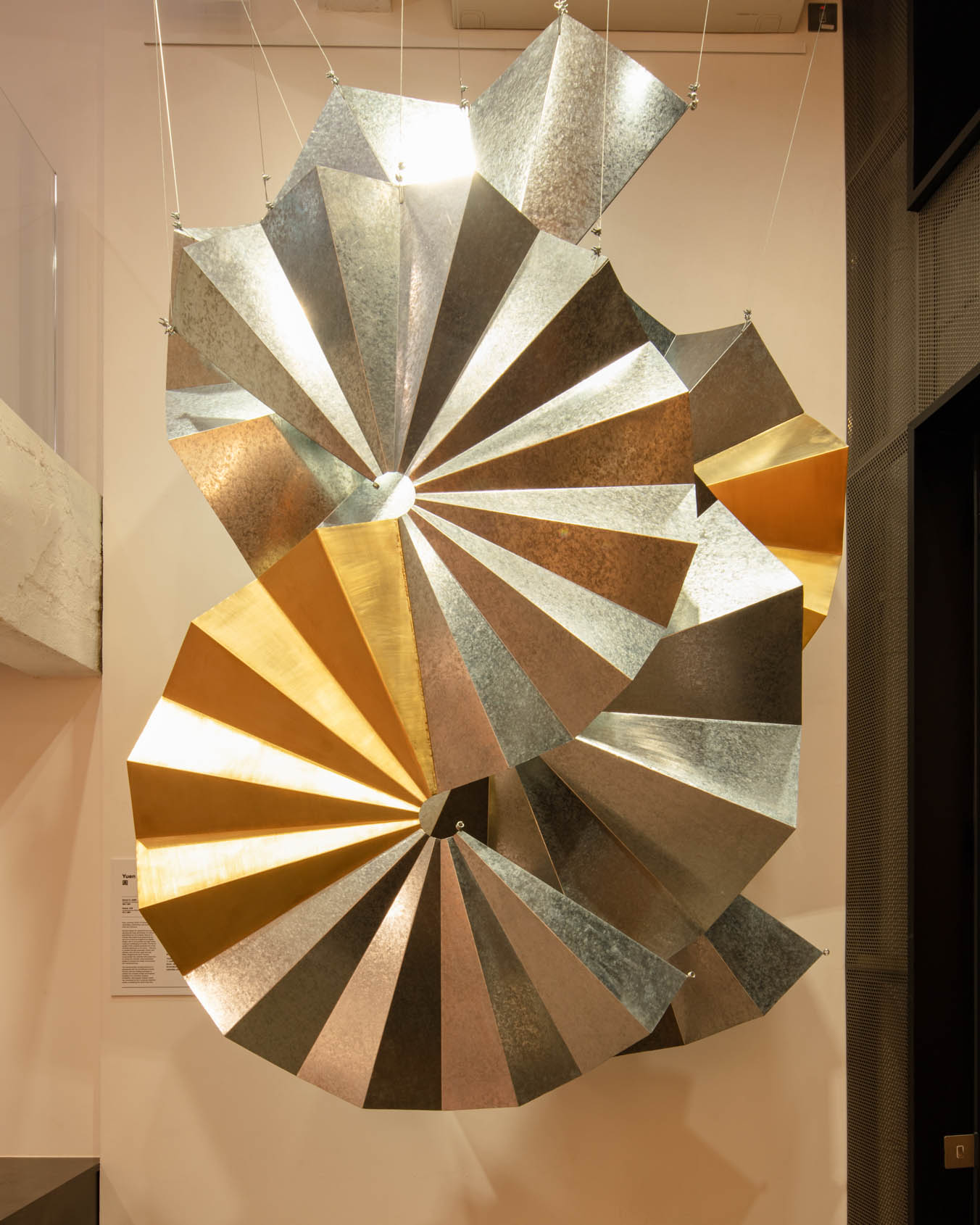
Yuen, meaning “circle” in Chinese, symbolizes contentment and perfection, unity and harmony.
Gamzar began his apprentice journey by learning the basic techniques of crafting galvanized iron from Master Michael Yu. Gamzar discovered that galvanized iron was not as hard as imagined but slightly elastic, soft on the outside and rigid inside, making it challenging to handle. This binary quality of the material reminded him of the Chinese philosophy of Yin-yang — harmony is created through opposites: motion and stillness, odd and even, rigid and soft. When designing the work, Gamzar incorporated two polarities with paper fans to convey his concept, using parametric design to analyze the shape and simulate the overall structure.
The natural pattern of galvanized iron is juxtaposed with the smoothness of brass. Gamzar used the folding technique to present the changes of light and shadow, resulting in an accordion-shaped installation. Rectangular-shaped metals are connected to form numerous imperfect circles, completing the circle in the end.
STORY OF THE TRADITIONAL CRAFT
Galvanized iron is an alloy of iron coated with zinc, which is soft and durable. It is the most affordable metal amongst all metals. Galvanized iron can be flattened and folded tightly to form a joint, not requiring any glue or nail. When plastic and stainless steel were not yet popular in the 1950s and 1960s, inexpensive galvanized iron was the typical material used for countless daily utensils, such as mailboxes, gates and mahjong boxes. In addition to household goods, the material was also used in industrial air-conditioning ducts.
Master Yu started working with galvanized iron to make a living. He started from understanding the making process and tools to measuring the size, cutting the material and finally producing air ducts for air conditioners. During the making process, he always paid attention to all the small details. He must fully understand each procedure to create a work from a flat piece of metal to three-dimensional product. The folds and buckles reflect the techniques and effort of the craftsmen, which is one of the reasons why Master Yu is fascinated by galvanized iron more than plastic.
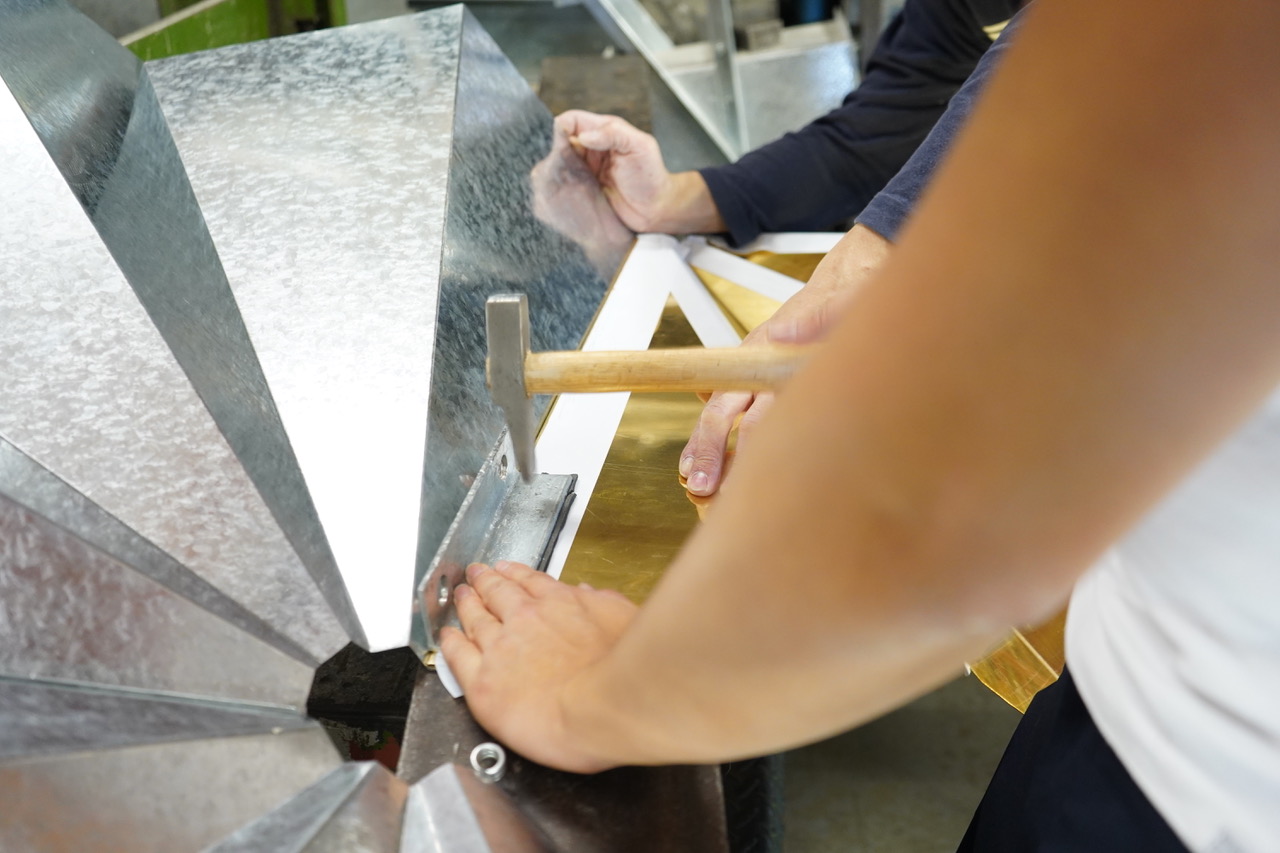
MAKING PROCESS
The installation combines contemporary parametric design with seven traditional galvanized iron craft techniques - drawing, marking, cutting, wrapping, folding, flattening and buckling.
From his design sketches, Gamzar used three-dimensional design software to configure and simulate the structure of the work. By changing the parameters, Gamzar could easily adjust each component's size to digitally visualize the design, while discussing the feasibility with Master Yu simultaneously.
While traditional techniques involve sketching on the metal with a snow piton, Gamzar had printed out his designs for tracing the outlines and joints on the metal instead. The metal was then trimmed with straight-cutting or arch-cutting snips accordingly. This process must be precisely controlled to achieve the desired effect.
Once trimmed all the components and after several rounds of experimentation, Master Yu and Gamzar determined the sequence and direction of buckling, including ways of folding and closing. Following the alignment of all components, they proceeded to create the ideal buckling structure by folding and hammering.
Wired edges were added to the tops and bottoms of each component before the process known as buckling. It is a technique that connects all components with a hammer. Buckling can be categorized based on the position of the joints: sheet connection and corner connection. Sheet connection includes cap strip seam, flat lock seam and single and double hem, which connects flat surfaces; corner connection includes Pittsburgh lock and wired edge, which connects corners.
Through the collaborative work of Gamzar’s creative designs and Master Yu’s skillful technique, twelve galvanized iron components were assembled into a set of three accordion-shaped artwork.
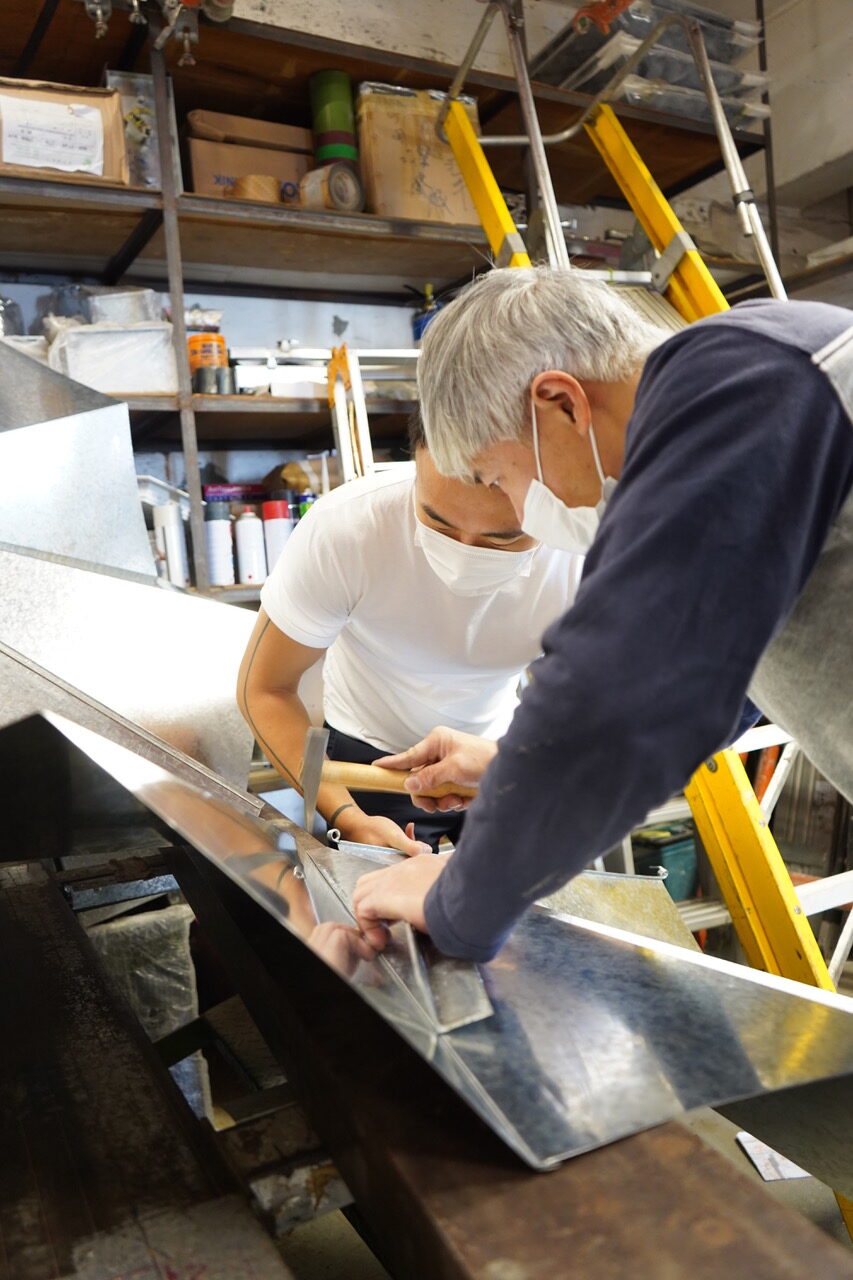
Artworks from same series
OTHER WORKS FROM EXHIBITION
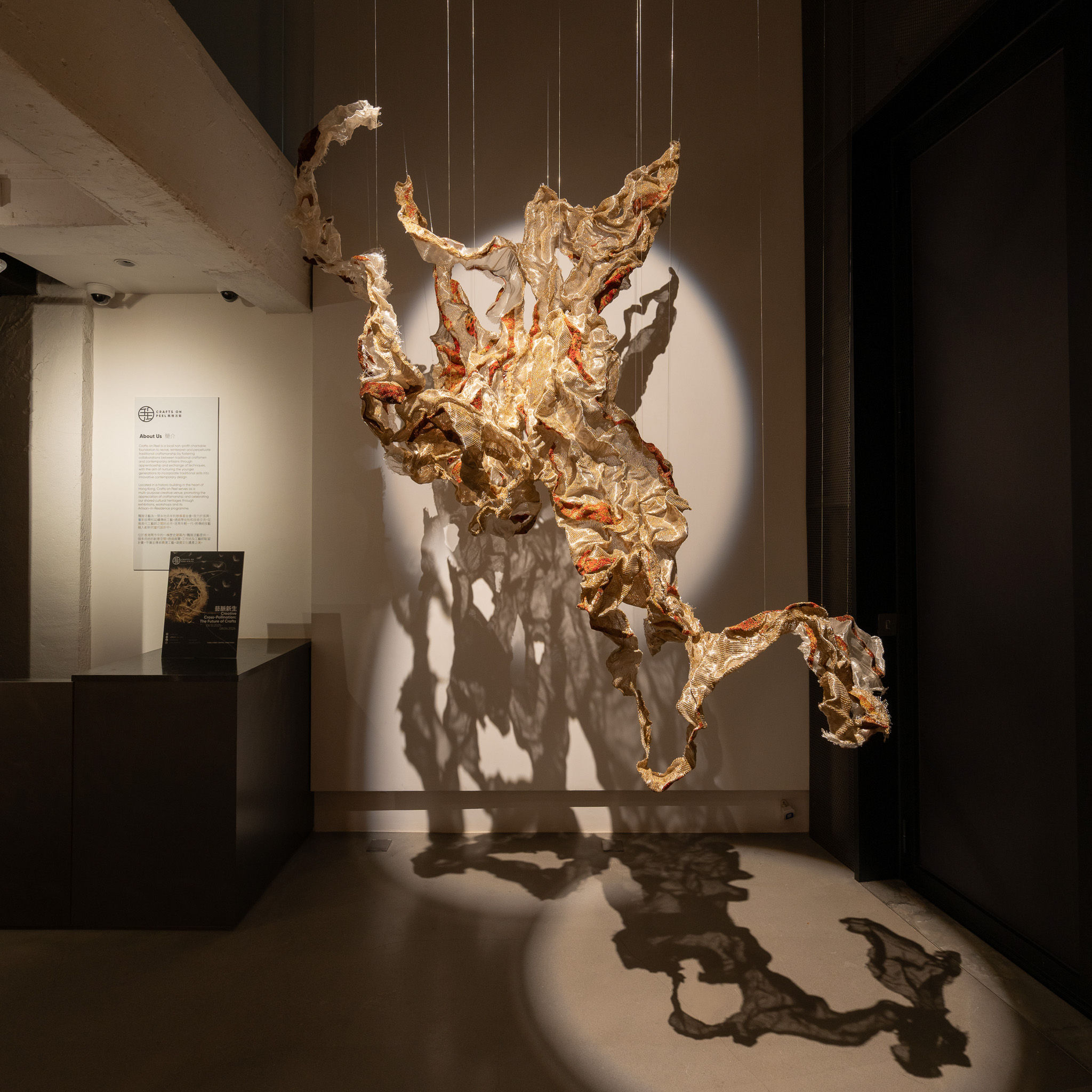

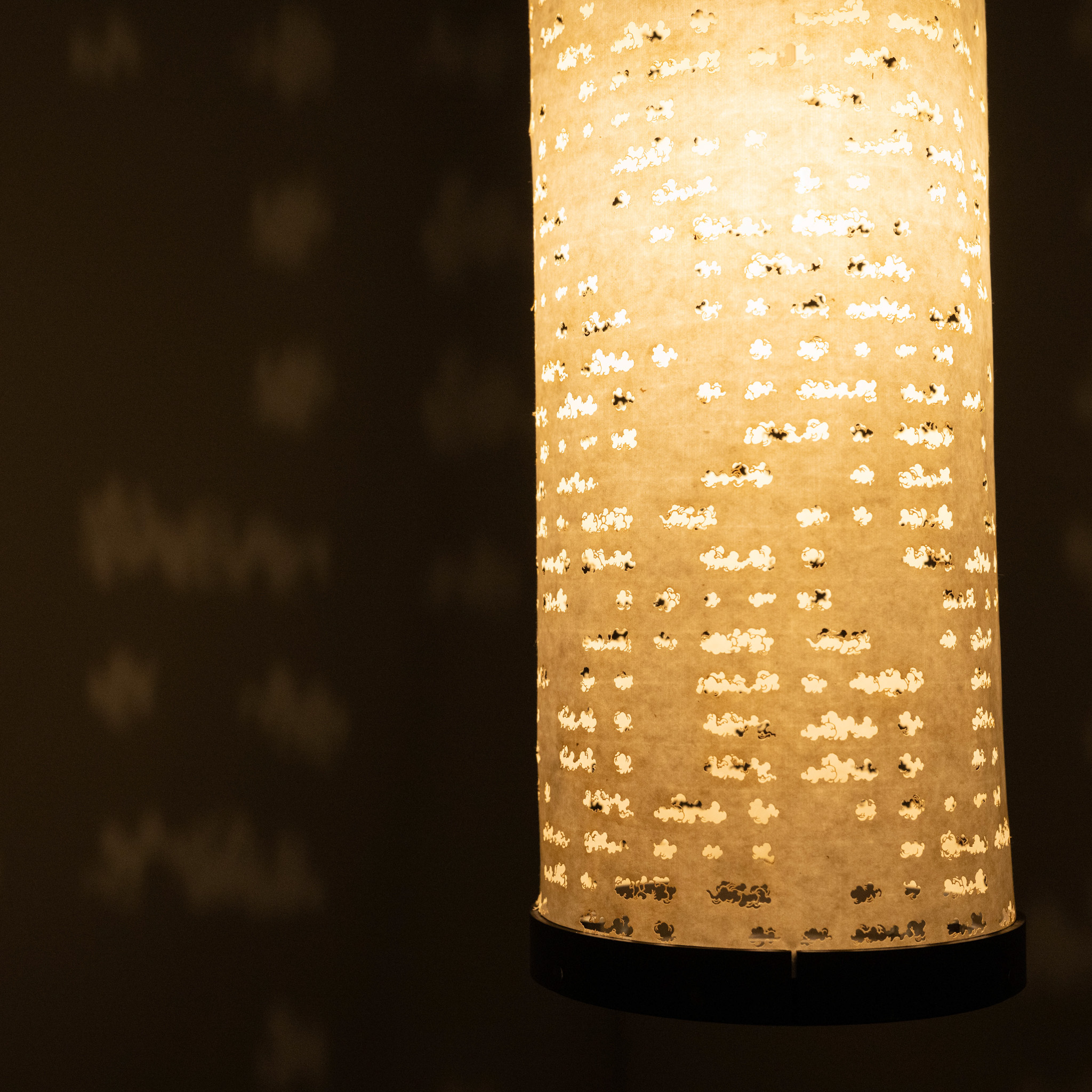
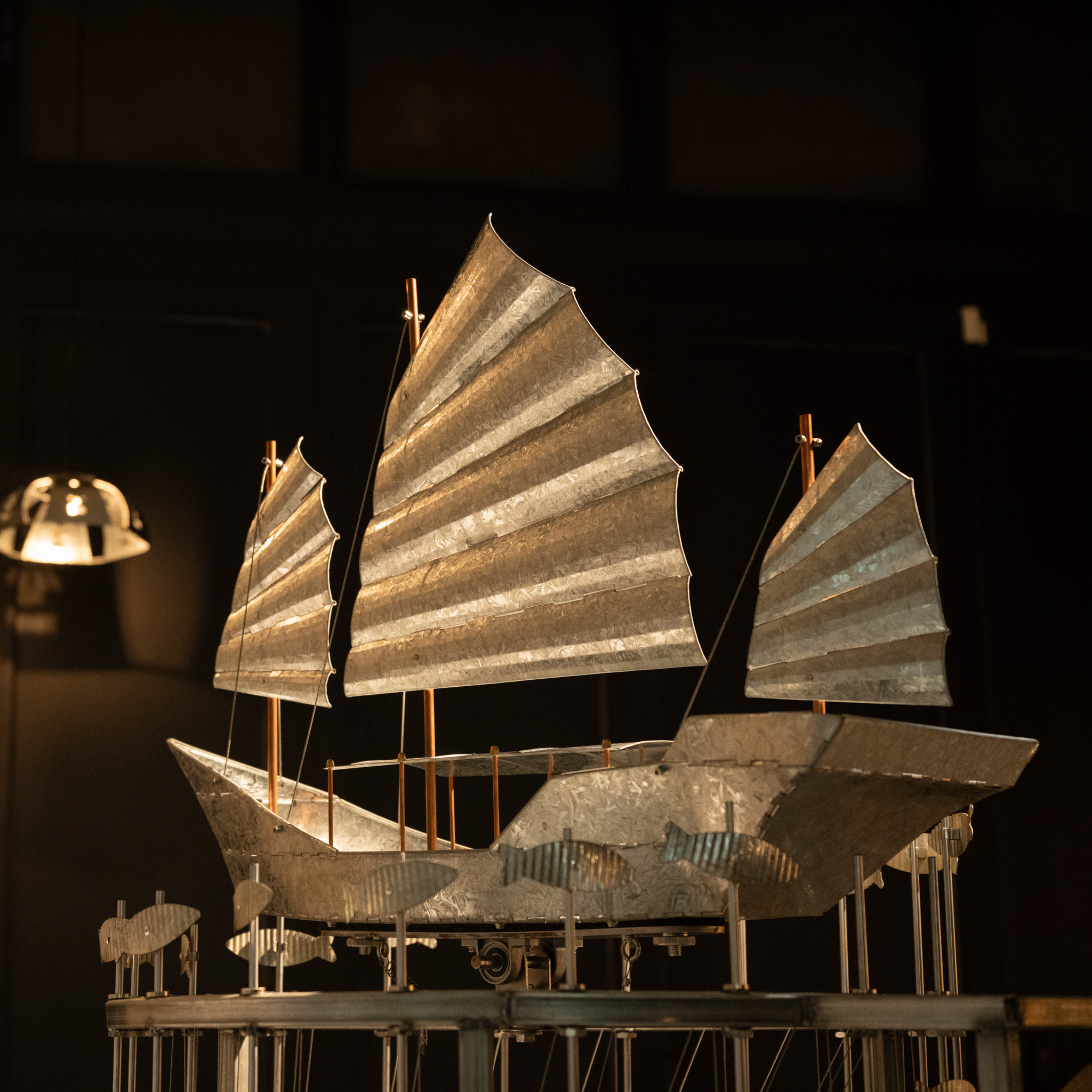

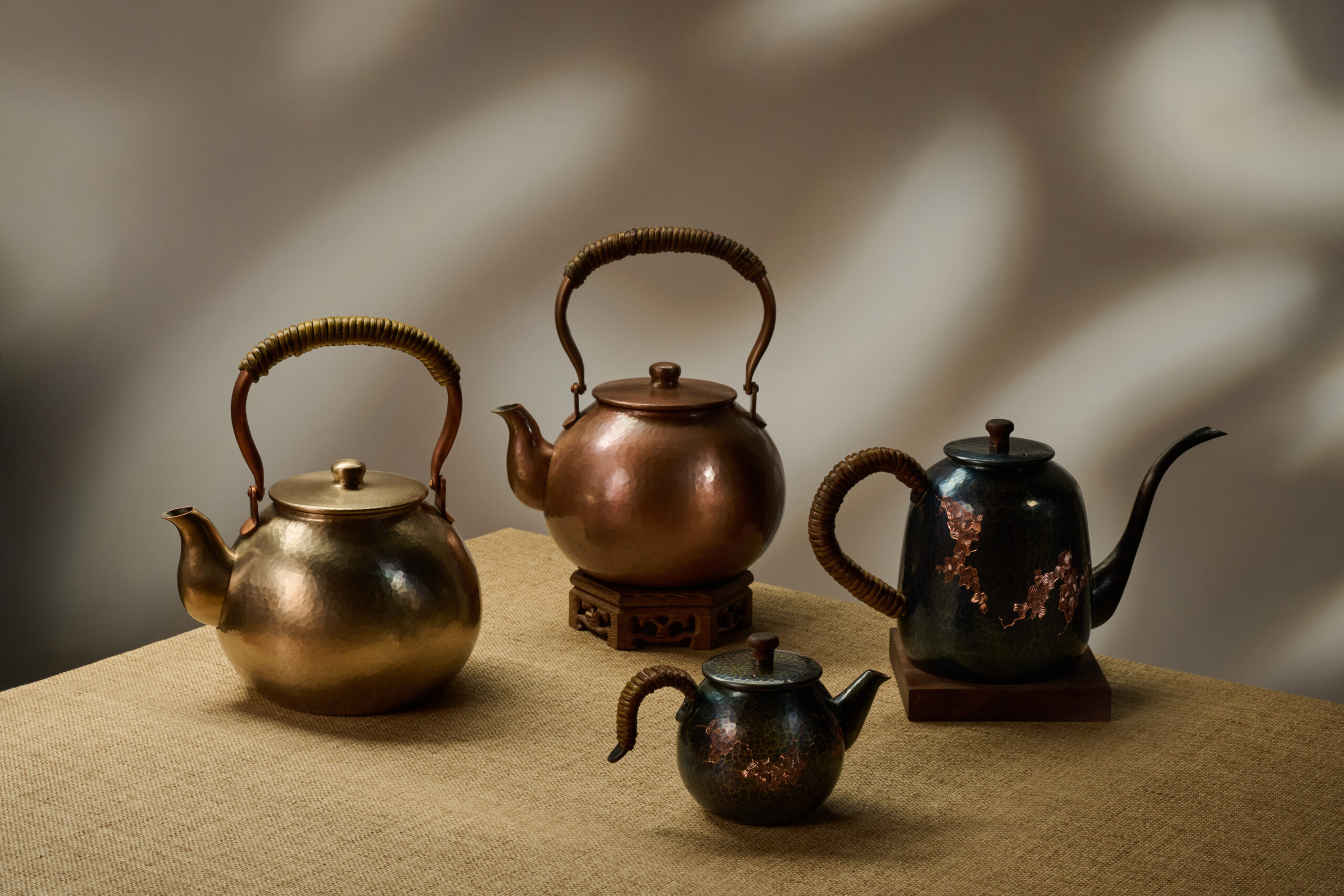
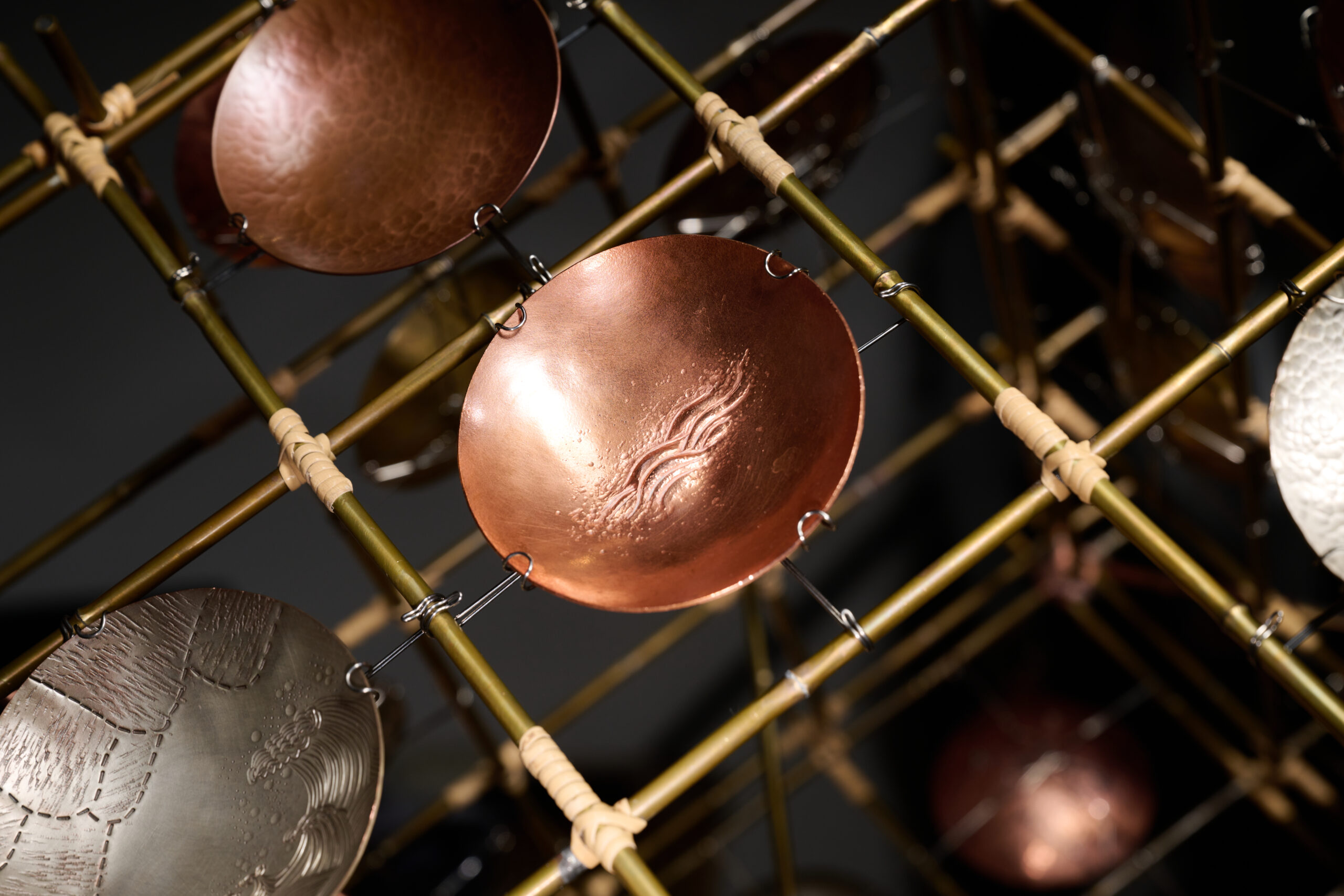
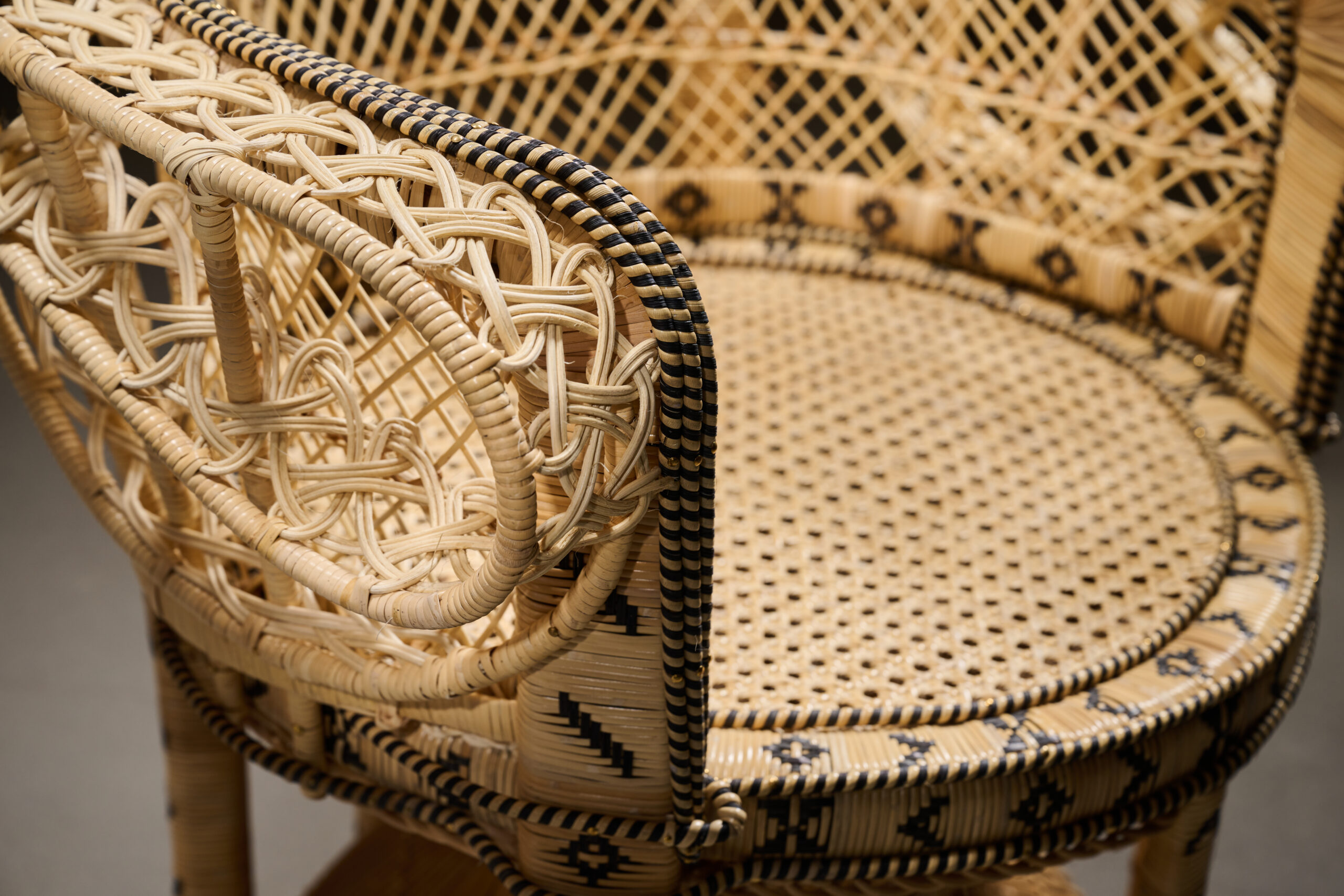
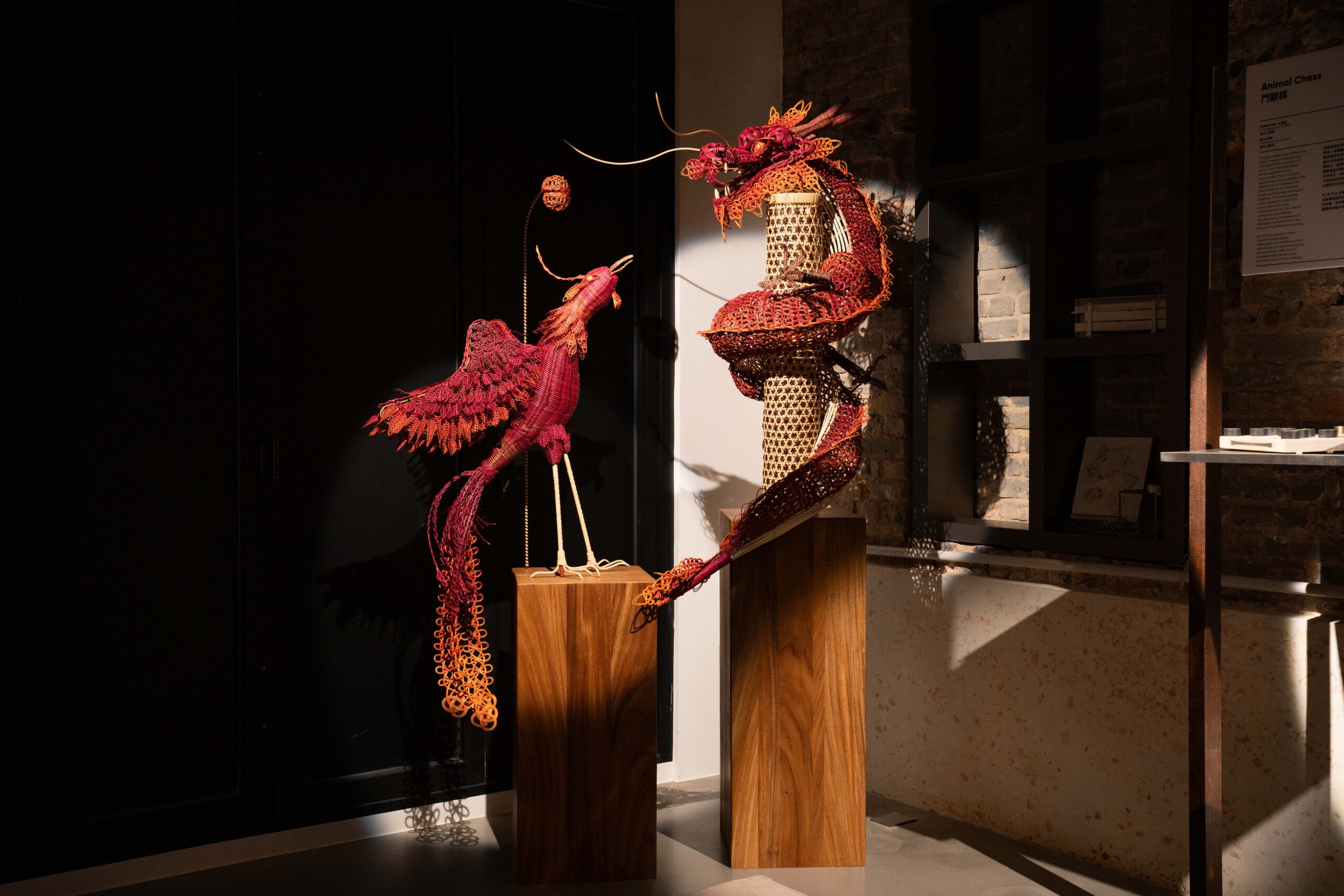
Auspicious Horizons
Yue Kee Rattan Factory & Ahung Masikadd & Barnard Chan & Cecilia Lai
